Filled with creamy avocado, sweet crabmeat, and crunchy cucumber, California Roll is by far the most popular style of rolled sushi in the US. It’s quite easy to make, even for beginners! I’ll show you how to make perfect rolls every time.
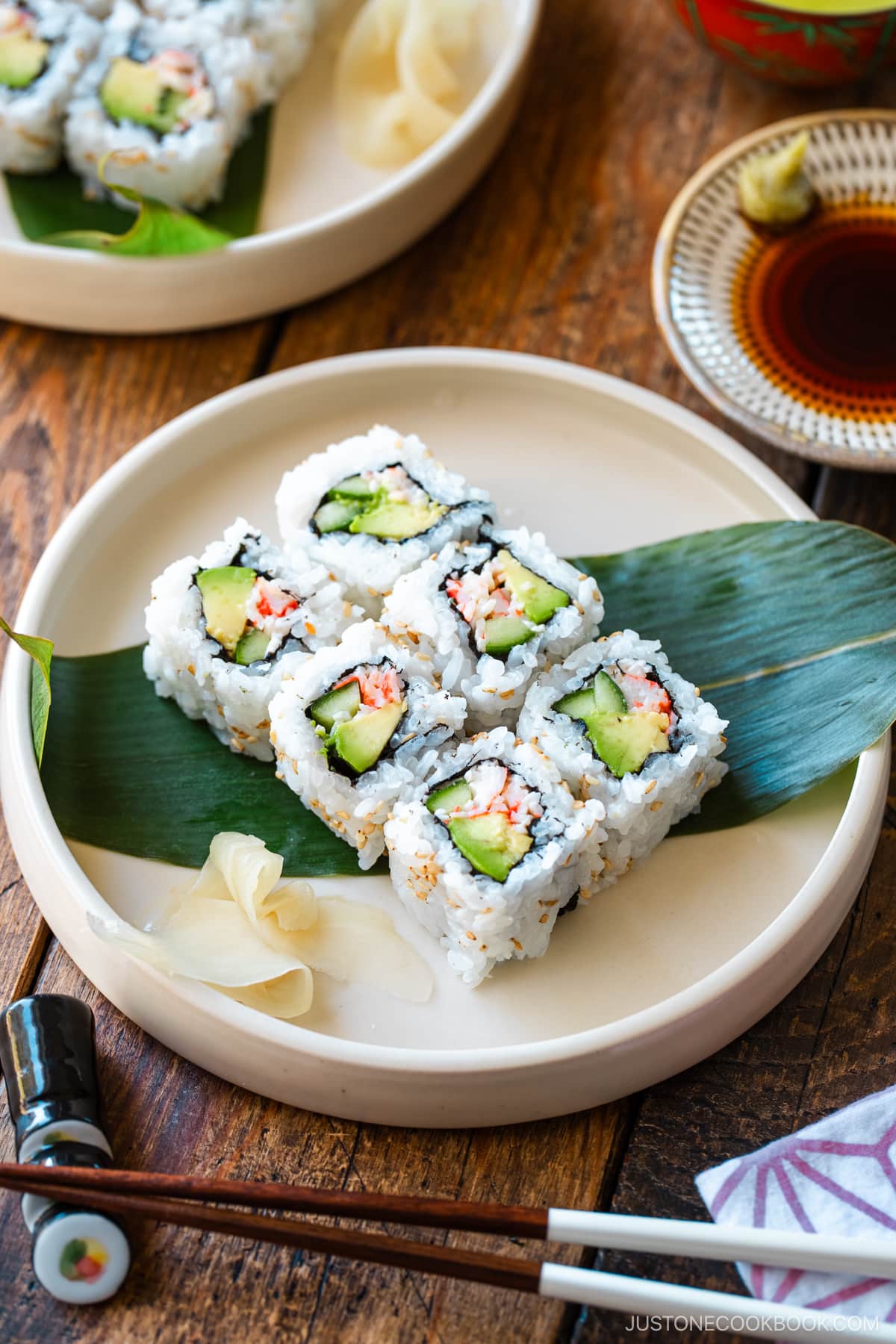
What was the first sushi roll that you tried at a Japanese restaurant? It might be California Roll, as it is by far the most popular style of sushi in the US. Today, I’ll show you how easy it is to make California rolls at home, even for beginners!
If you love making sushi at home, try my Inari Sushi, Dragon Roll, and Spicy Tuna Rolls next!
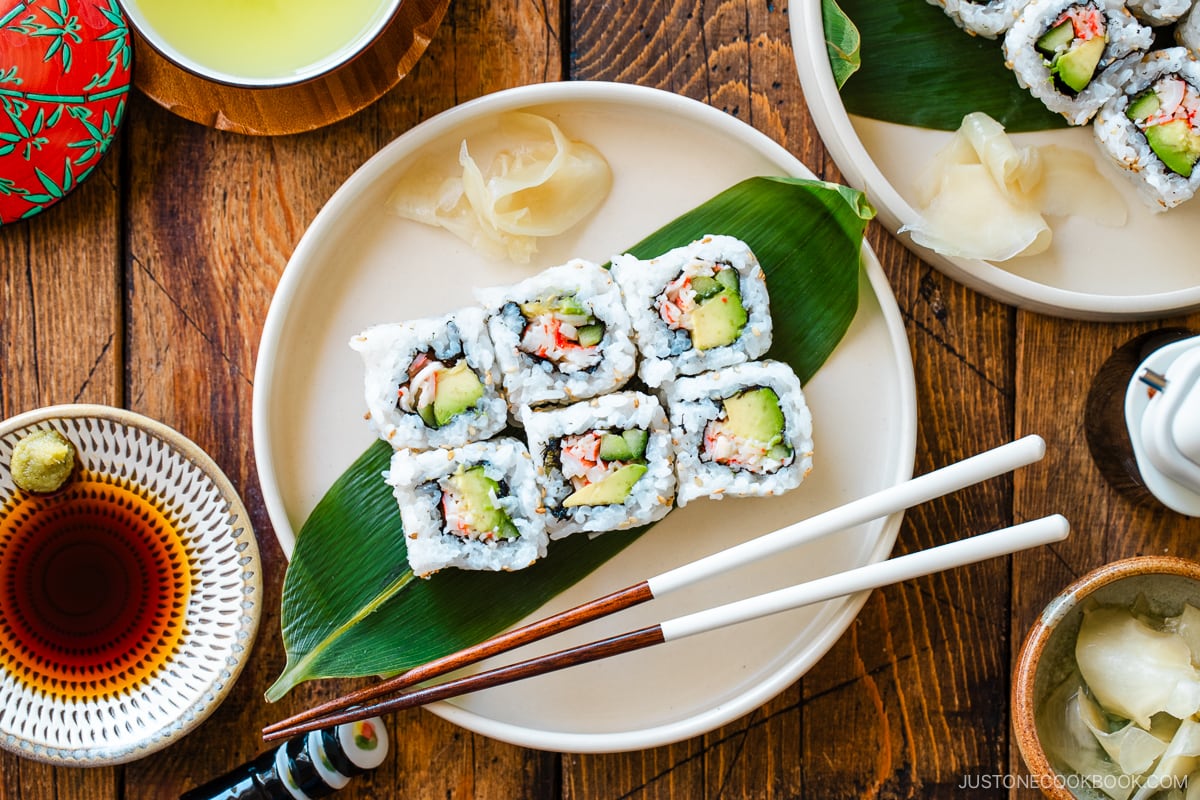
What Is California Roll?
California roll (カリフォルニアロール) is an inside-out sushi roll (uramaki) where the sushi rice is on the outside and the fillings and nori are rolled inside. As the name might suggest, the California roll did not originate in Japan. Rather, Japanese-born sushi chef Hidekazu Tojo of Vancouver, Canada claims to have invented it at his restaurant in the 1960s after learning that Westerners were apprehensive about trying raw fish. Today, California rolls are synonymous with sushi in the West.
Why This Recipe Works
- It’s deceptively easy – Even newbies to sushi-making will have no trouble with this recipe. I include plenty of step-by-step pictures to show you how!
- Perfect for sharing – There is no raw fish, even my friends who fear “fishy” flavors love this sushi roll.
- Great for on the go – We love packing sushi rolls in bento boxes, and they make a wonderful packable lunch!
- Customizable – You can adjust the fillings depending on what you’re craving.
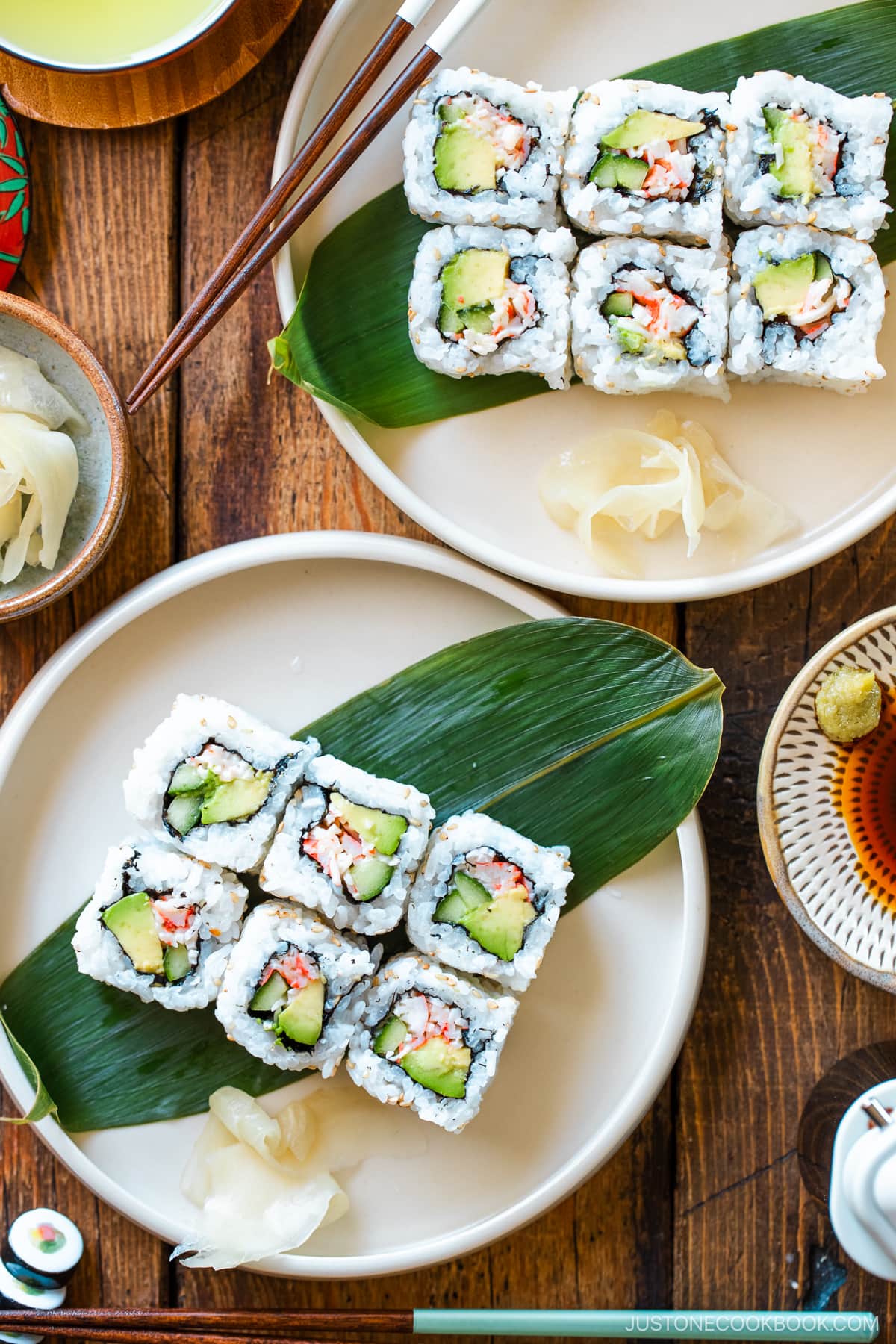
Ingredients for California Roll
- Nori (seaweed) sheets
- Toasted white sesame seeds
- Sushi rice:
- Japanese short-grain white rice
- Water
- Kombu (dried kelp)
- Seasoned rice vinegar (sushi vinegar) – store-bought or homemade (see below)
- Filling:
- Crabmeat – real crab meat or imitation crab
- Japanese Kewpie mayonnaise
- Japanese or Persian cucumbers
- Avocado – sprinkled with lemon juice to prevent browning
Find the printable recipe with measurements below.
Substitutions
- Kombu (dried kelp): I love to add a piece of kombu when cooking the rice to infuse it with a nice aroma and hint of umami. You can skip it if you don’t have any on hand.
- Sushi vinegar: We traditionally make sushi rice using rice vinegar that’s seasoned with salt and sugar, also known as sushi vinegar. If you can’t find it, you can make your own by combining ⅓ cup unseasoned rice vinegar with 3 Tbsp sugar and 1½ tsp kosher salt.
- Crabmeat: I typically use imitation crab meat sticks, which are made of processed white fish. You are welcome to use real crab, if you prefer.
- Japanese mayo: Japanese mayonnaise is made with egg yolks for a more velvety texture. If you can’t find it, you can combine 1 cup of American mayonnaise with 2 Tbsp rice vinegar and 1 Tbsp sugar. The flavor won’t be the same, but it can work in a pinch.
- Japanese cucumbers: I enjoy the delicate taste and crunchy texture of Japanese (or Persian) cucumbers. If you can’t find them, regular cucumbers or English cucumbers will work.
Key Kitchen Tools
- bamboo sushi mat – I recommend the Sushi Making Kit from JapanBargain that comes with three bamboo mats, rice paddles, and a Japanese wooden tub (hangiri) for seasoning the sushi rice.
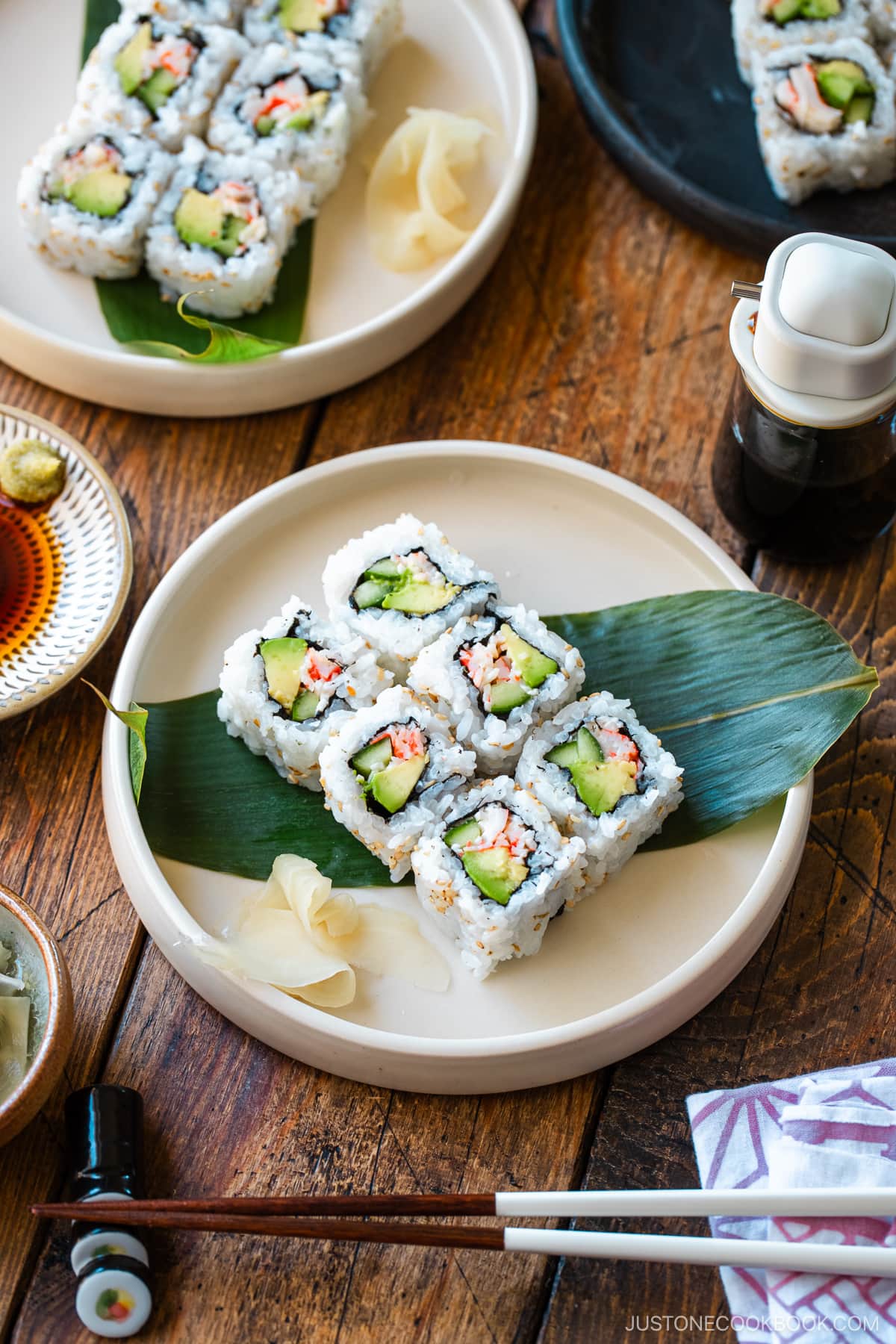
How to Make California Roll
Sushi Rice
Step 1 – Wash and cook. Wash and rinse the rice three times, then drain well. Add the drained rice, kombu, and water to a rice cooker. Soak it, then cook according to the manufacturer’s instructions.
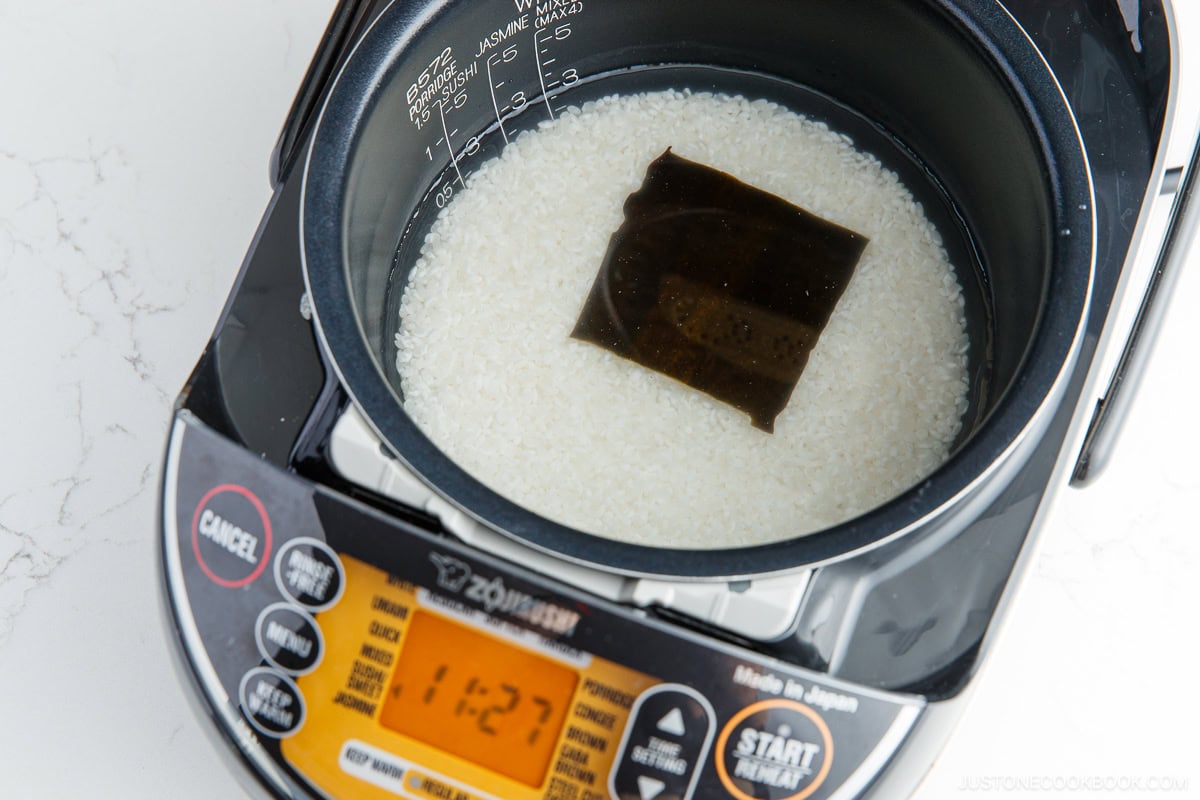
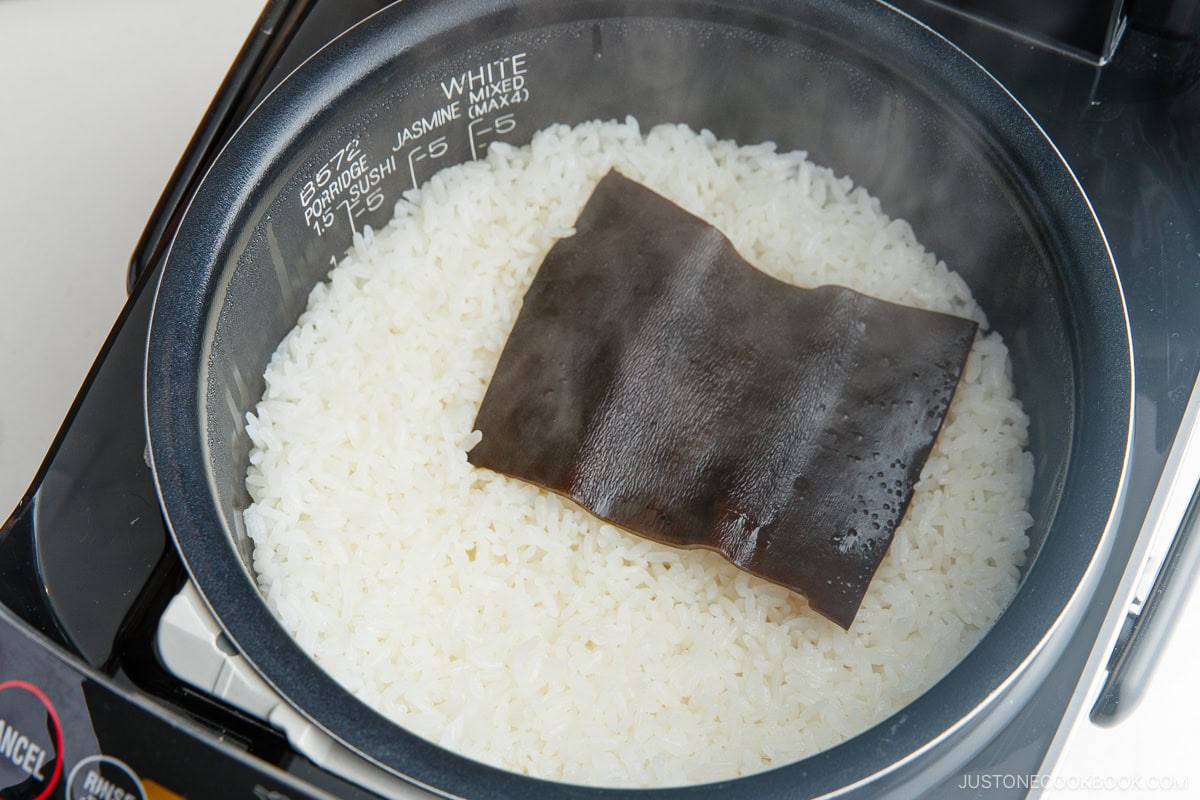
Step 2 – Season. Transfer the cooked rice to a large bowl and let cool. Pour the seasoned rice vinegar mixture on top and mix gently with a rice paddle. Cover with a damp cloth.
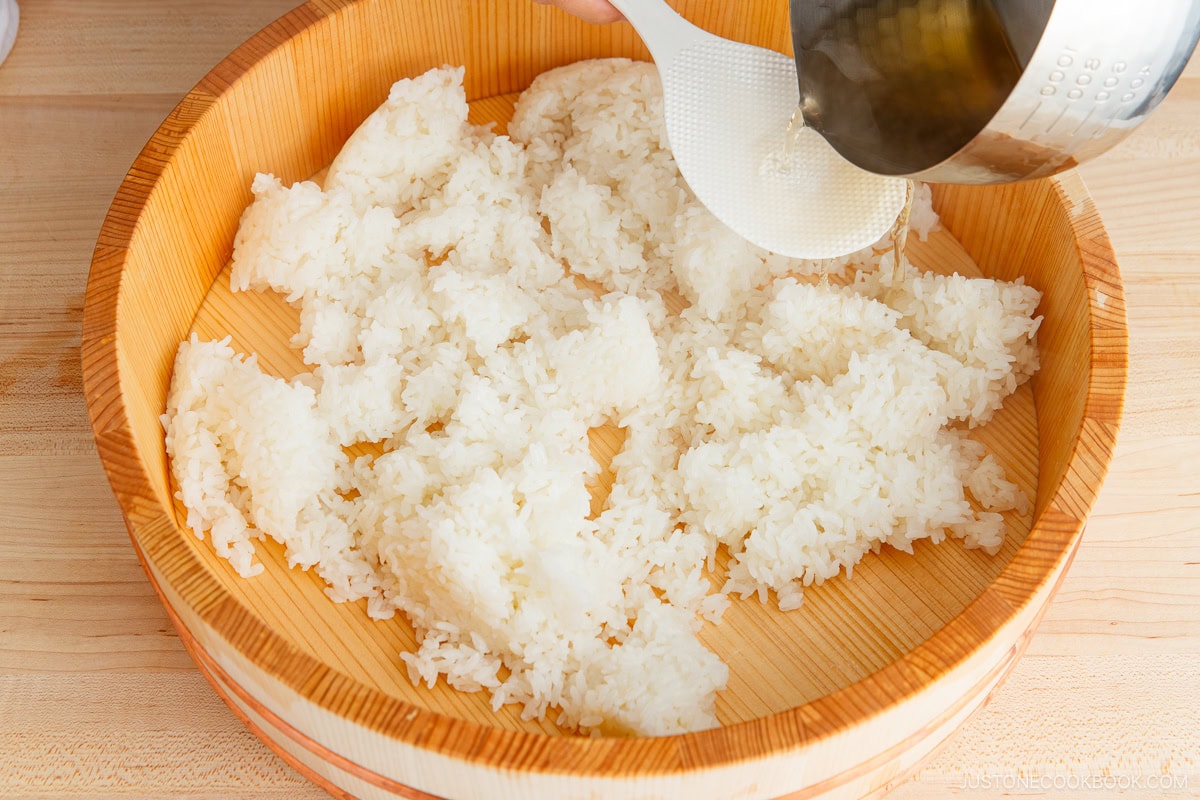

Filling
Step 3 – Prepare the crabmeat and cut the cucumber. Slice the crabmeat into 1-inch pieces, separate into smaller pieces, and mix with the Japanese mayo. Slice the cucumber into long pieces and discard the seeds. Then cut into thin strips.
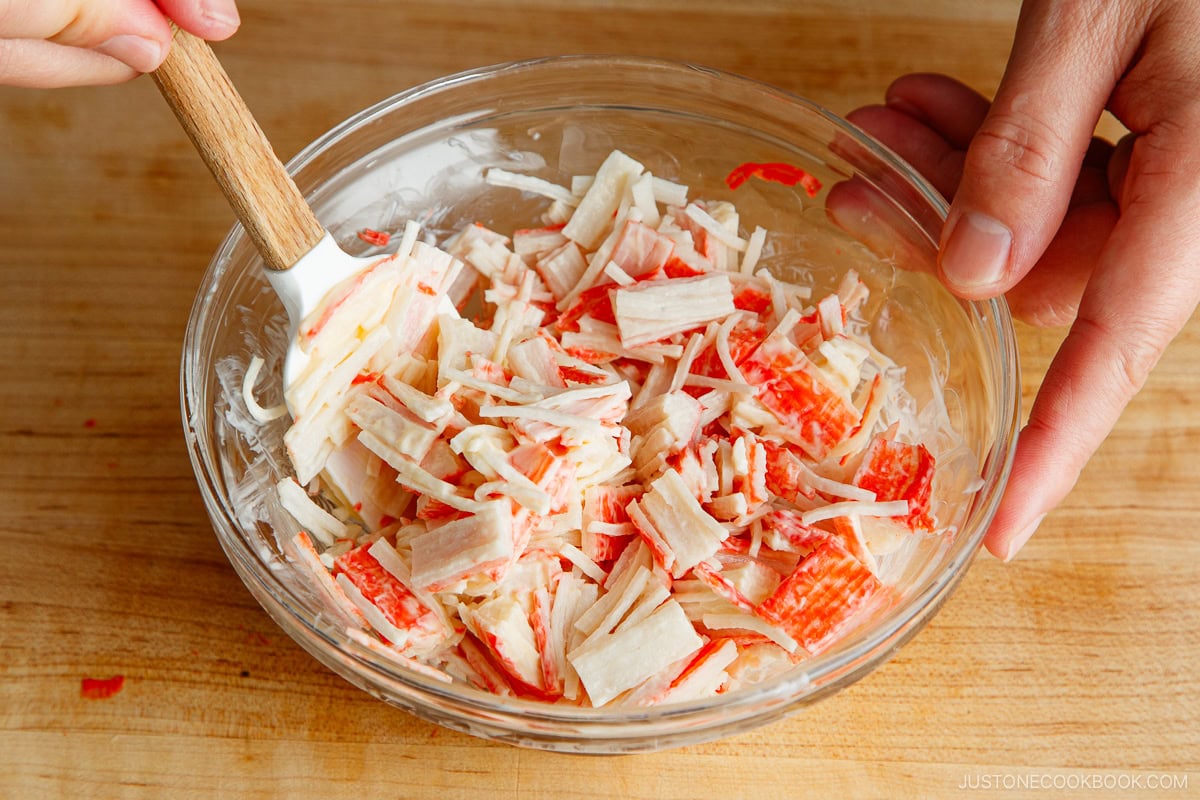
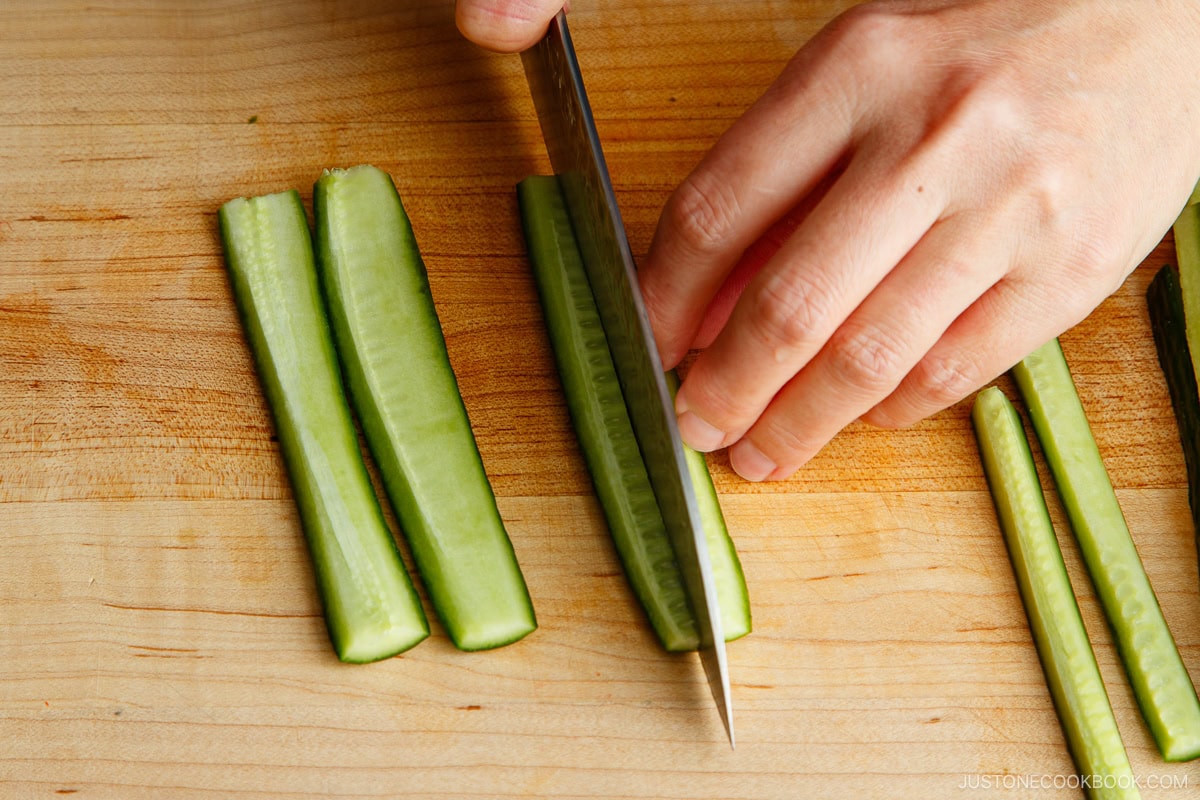
Step 4 – Cut the avocado and nori. Cut the avocado into thin, even slices. Lastly, cut the nori sheets in half.
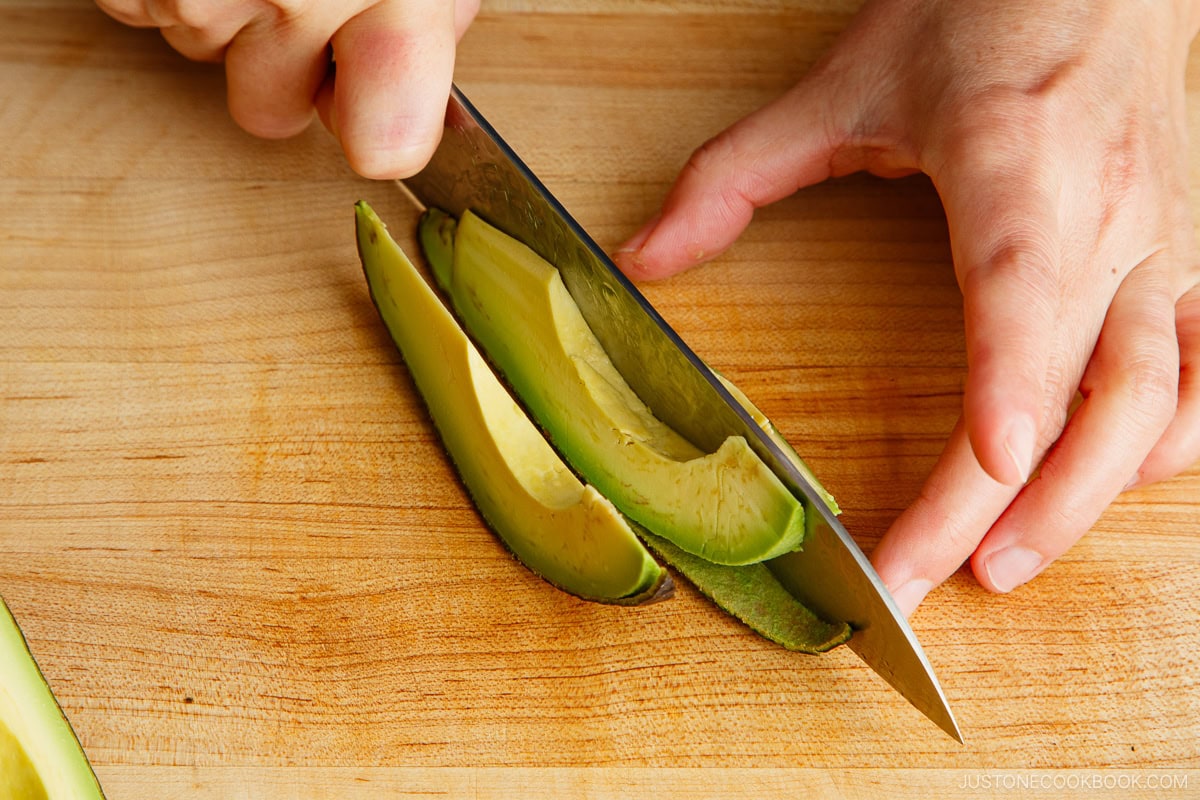
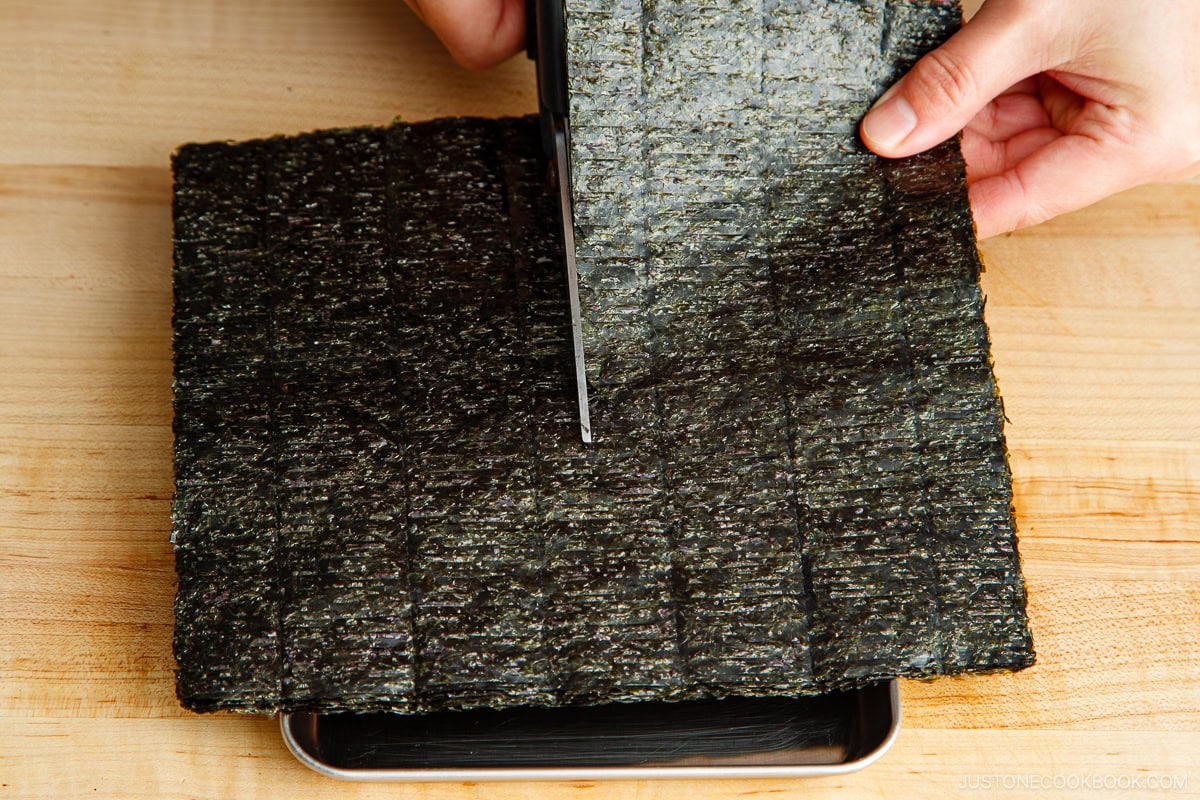
Assemble
Step 5 – Build the rice layer. Lay a nori half sheet on a rolling mat covered with plastic wrap. Spread sushi rice evenly to cover the nori, then sprinkle with sesame seeds.
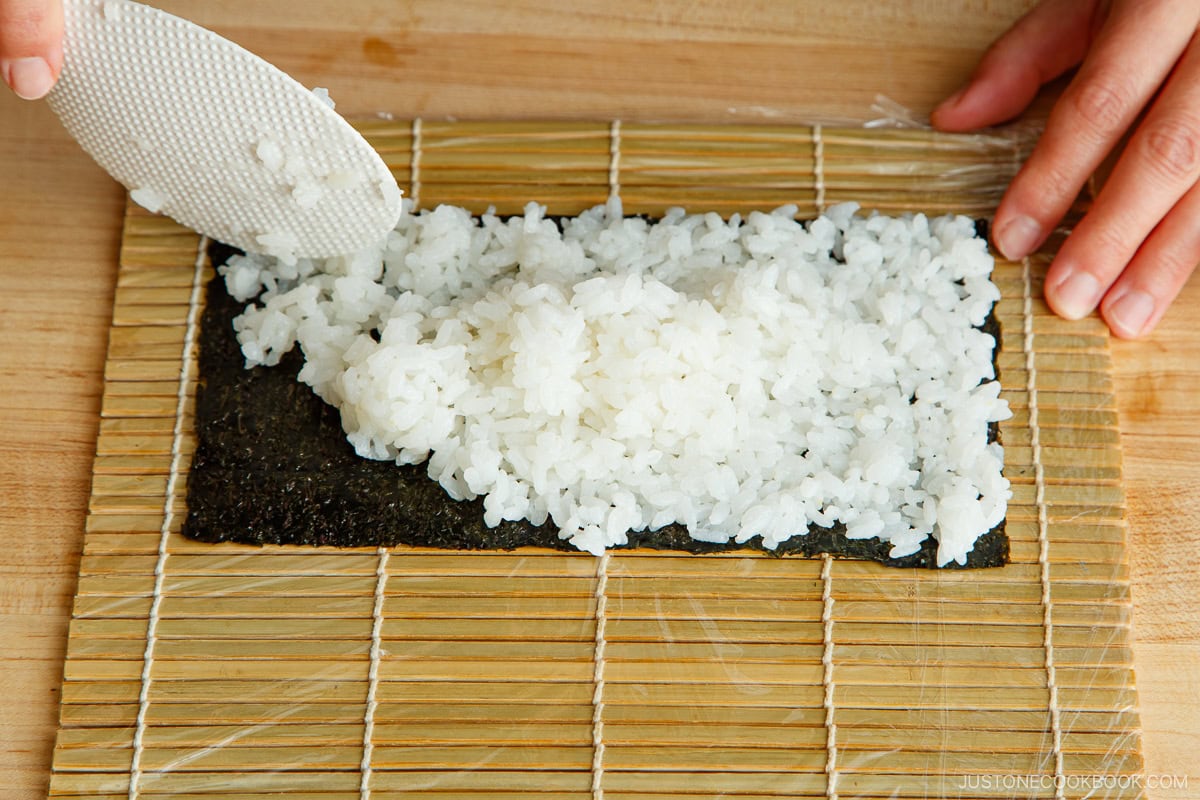

Step 6 – Flip over and fill. Flip the nori sheet so the rice is facing down. Line up the crabmeat, cucumber, and avocado slices across the nori starting 1 inch from the bottom edge.
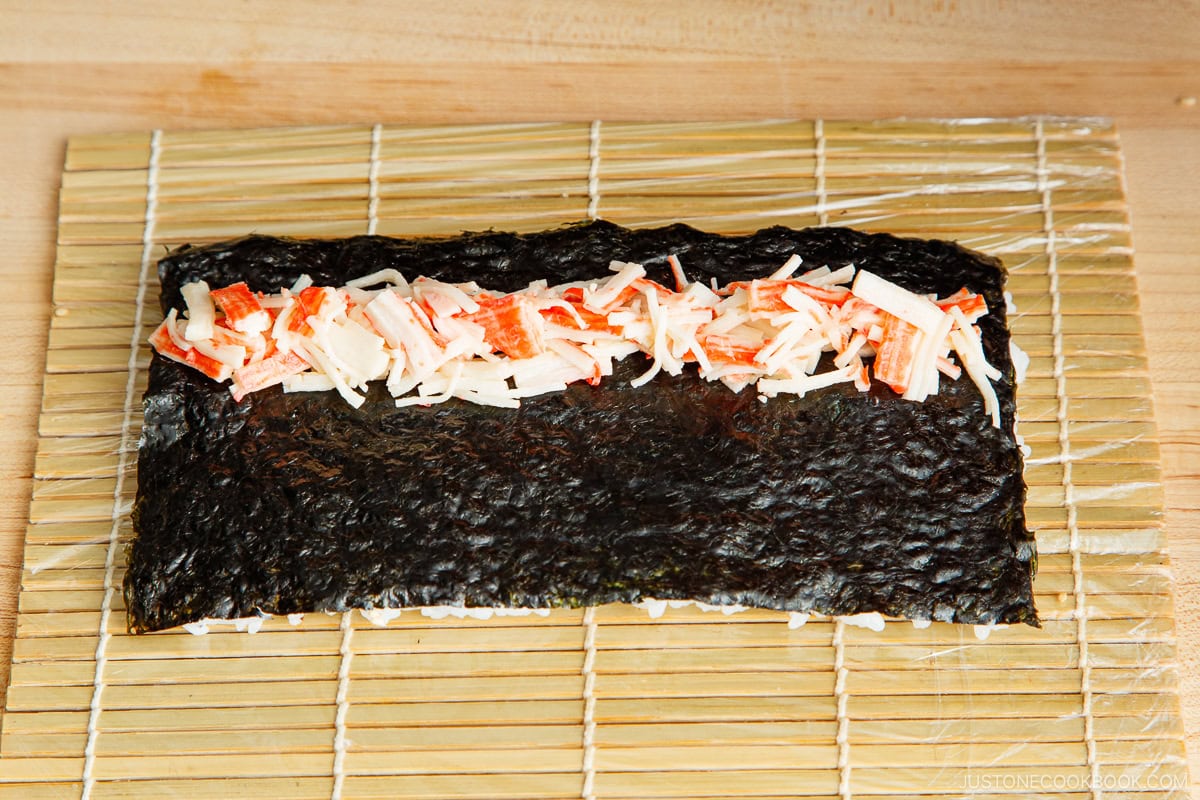
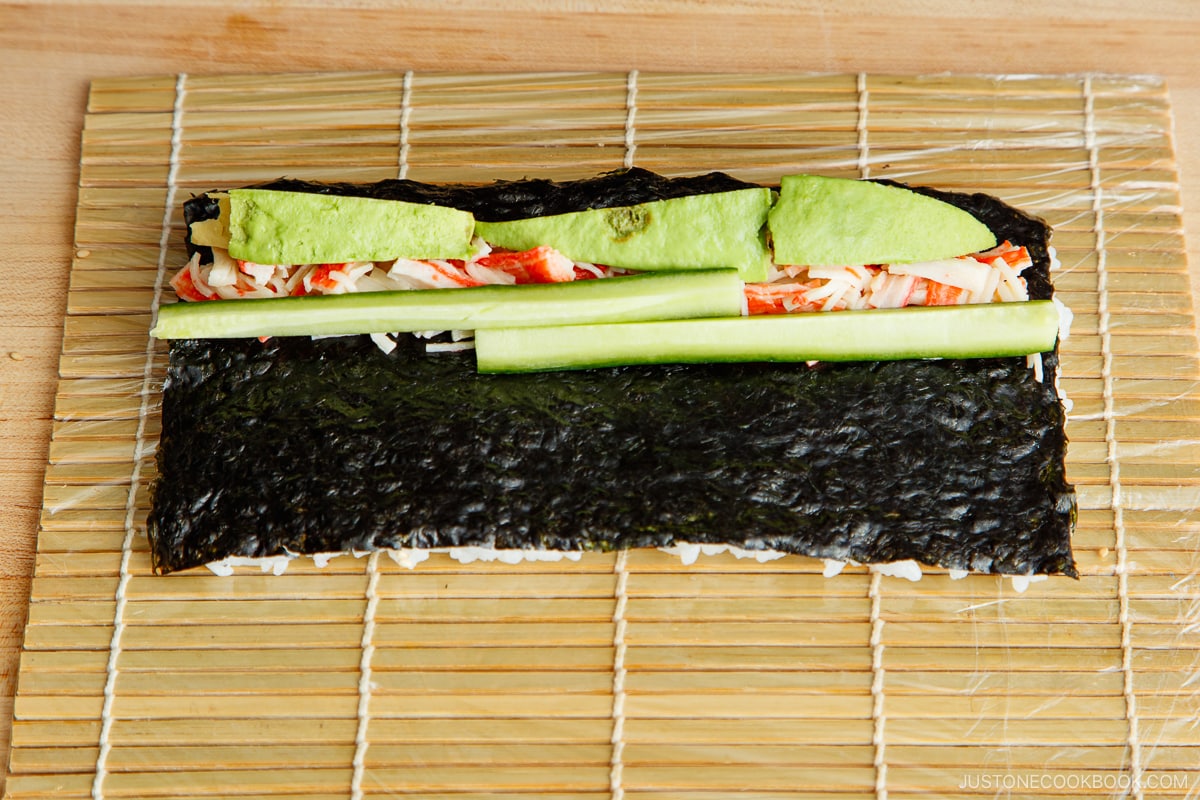
Rolling
Step 7 – Roll. Carefully roll the nori and rice over the filling. Squeeze it to form a tight cylinder, then press to shape it.
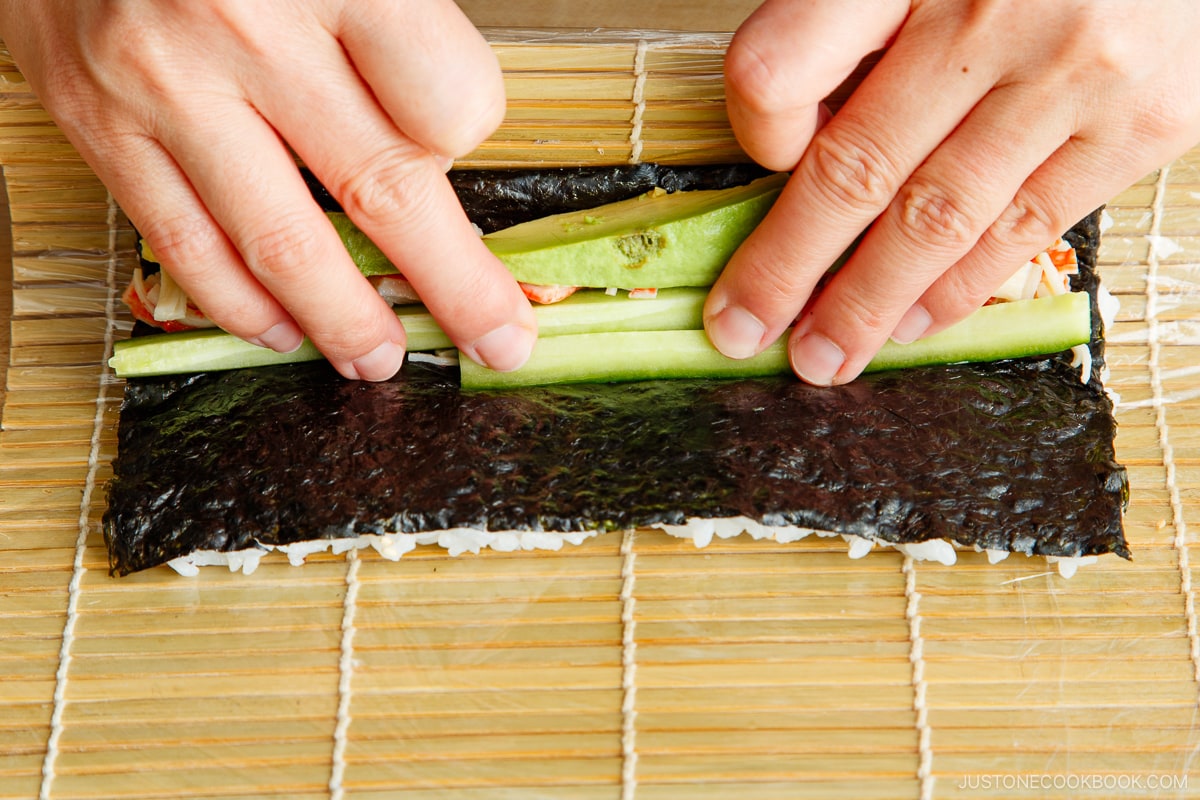
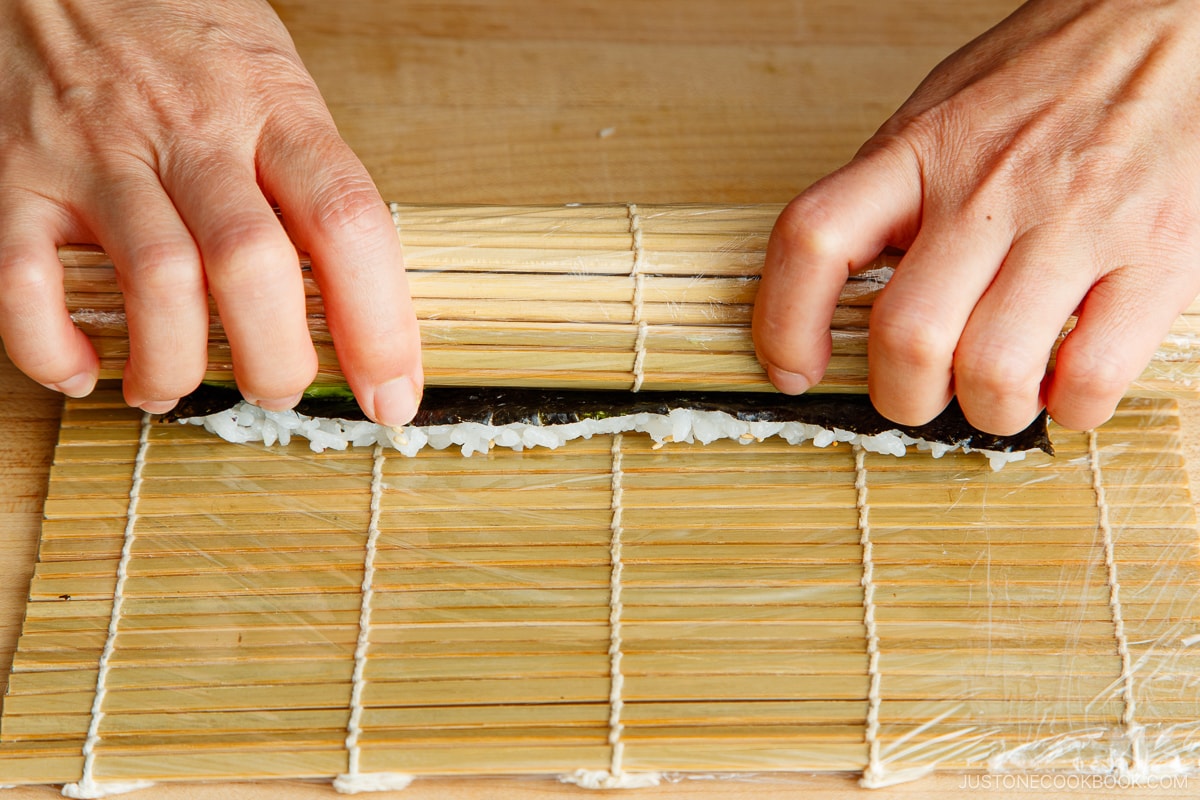
Step 8 – Slice the sushi. Use a sharp knife to slice the roll into 8 equal-sized pieces. Reshape the roll using the mat one last time.
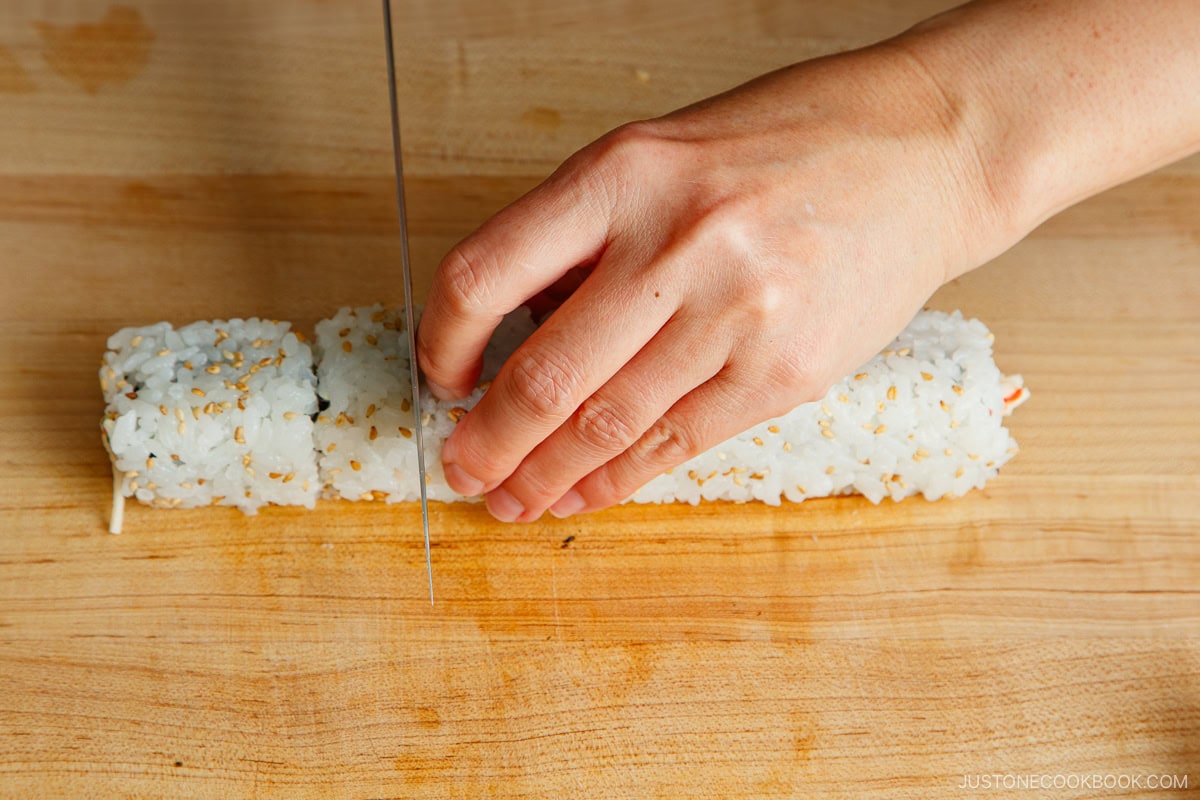
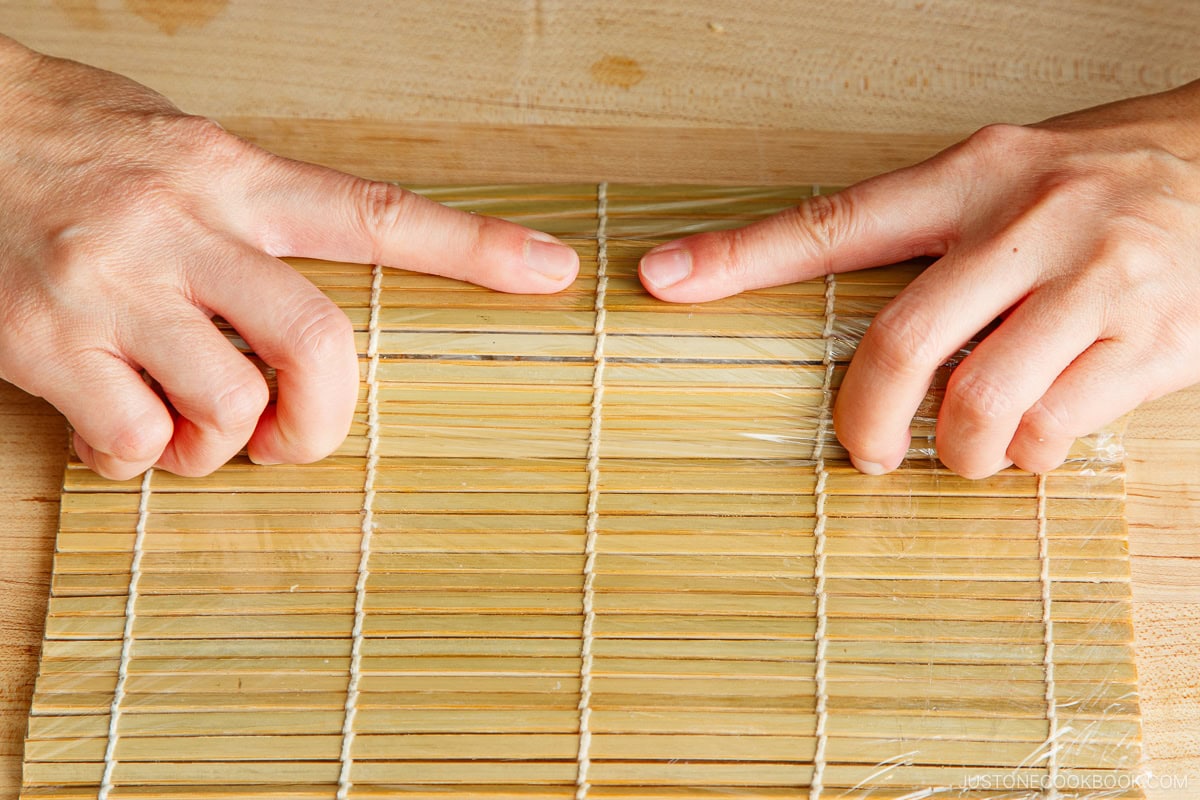
Step 9 – Serve with the sushi with soy sauce and optional Pickled Sushi Ginger and wasabi.
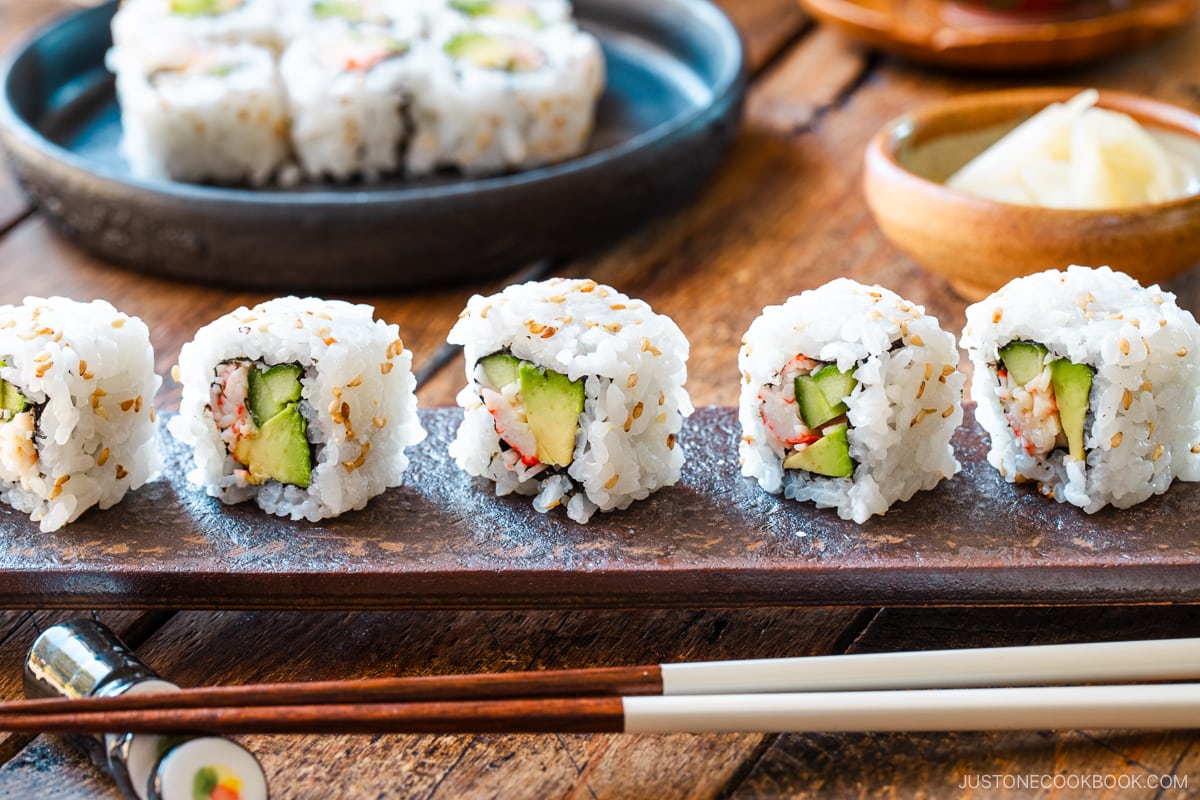
Nami’s Recipe Tips
- Distribute the rice evenly – Make sure to add the rice in a thin, even layer. Otherwise, the roll will become lopsided, and the filling can burst through the nori.
- Avoid overstuffing the rolls – It may seem basic, but you’d be surprised how easily we overstuff the sushi, making it difficult to seal the rolls. Start with a small amount of filling and gradually increase to an amount you can easily roll.
- Roll the sushi compactly – If loosely rolled, the roll may fall apart. Pull the bamboo mat in opposite directions and use tension to tighten the roll.
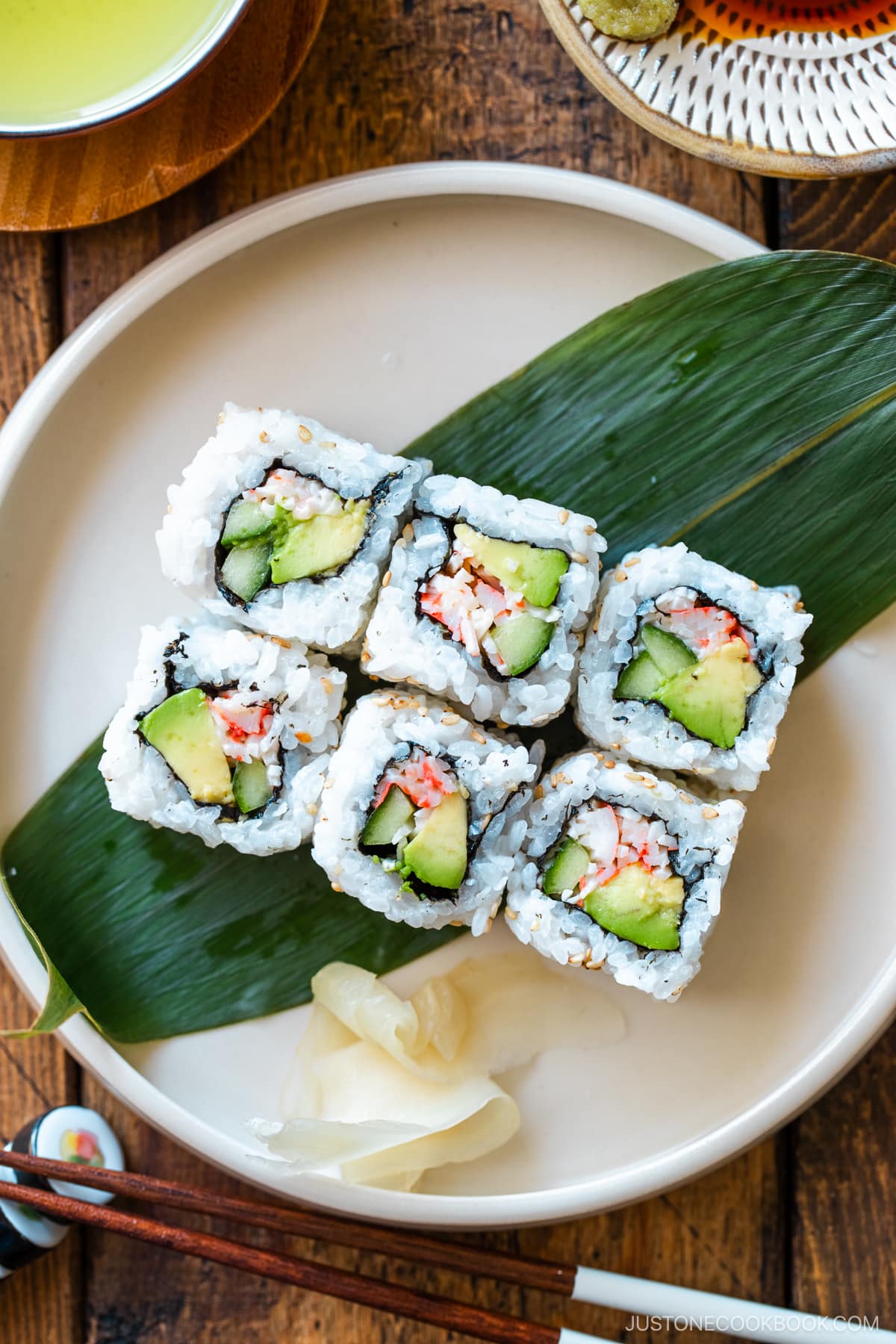
Variations and Customizations
You can easily change up your California rolls with different types of fillings or toppings like my suggestions below.
- Top with tobiko. Also known as fish roe, I find tobiko makes a gorgeous, colorful topping. I use a tablespoon or two of yuzu-flavored tobiko, so it’s yellow-colored instead of the standard orange color.
- Make “regular” sushi rolls. If you’re having difficulty rolling the sushi, you can forgo the inside-out method and roll the sushi with the nori on the outside. Or, you can use three-quarters or a whole sheet of nori instead of a half sheet. It’s much easier to handle!
- Spice it up. Drizzle sriracha hot sauce in the crabmeat mixture or top the roll with Homemade Spicy Mayo.
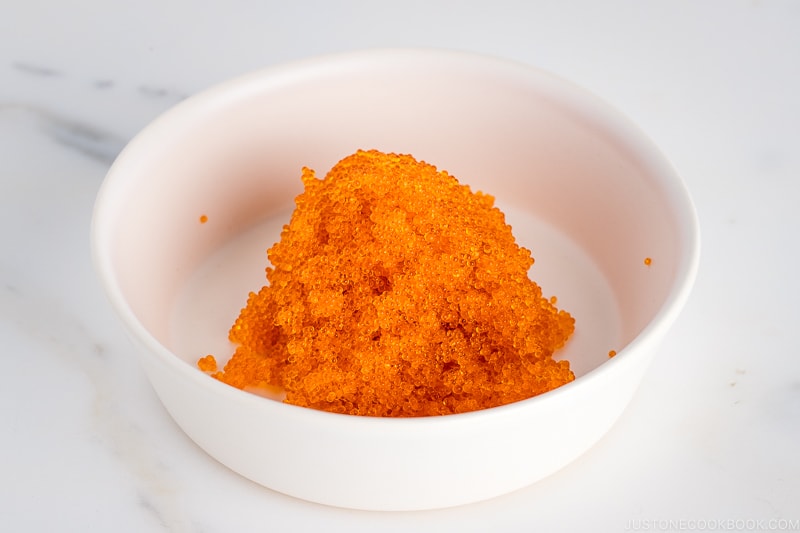
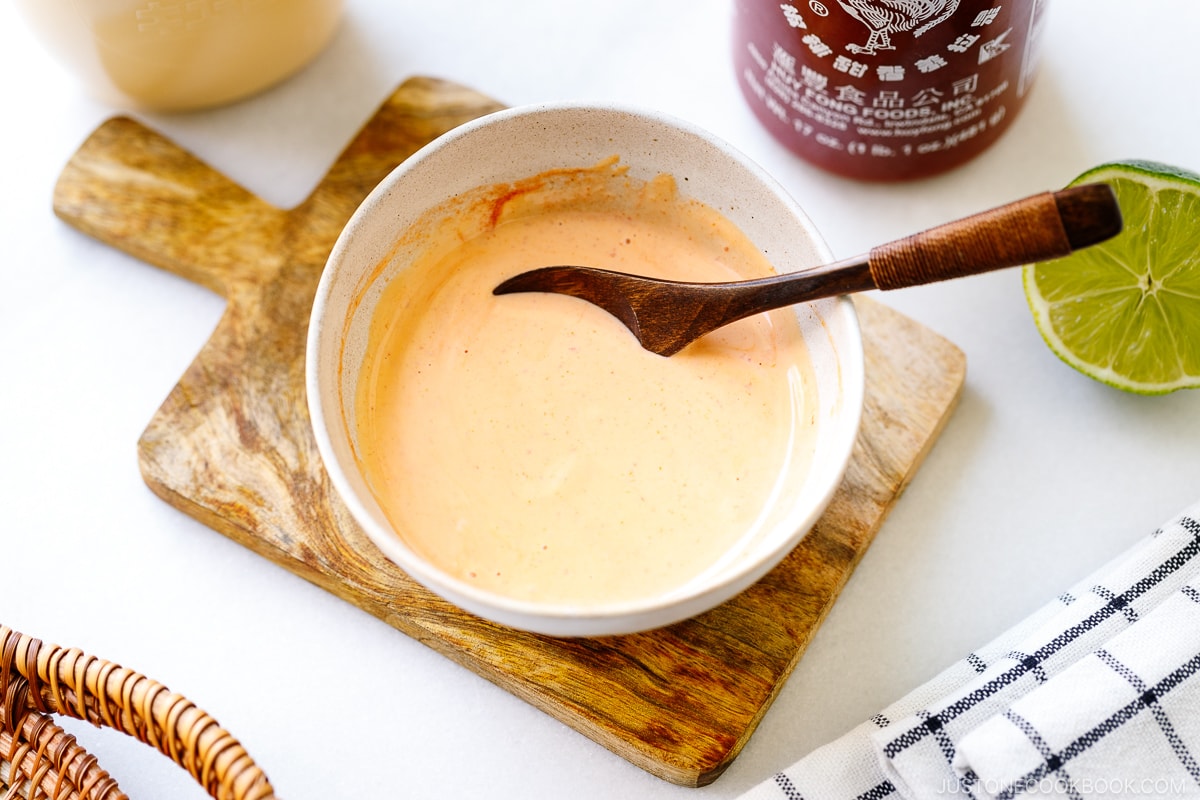
What to Serve with California Roll
Sushi rolls are great as a side dish or with a variety of rolls and smaller dishes. Here are some of my favorite ways to serve them.
- Alongside other sushi rolls – Temaki Sushi uses a variety of different ingredients and pairs well with California rolls.
- With fried appetizers – Shrimp Tempura adds a different texture and rich flavor that complements fresh sushi rolls.
- With soup – I love to serve Homemade Miso Soup with this sushi.
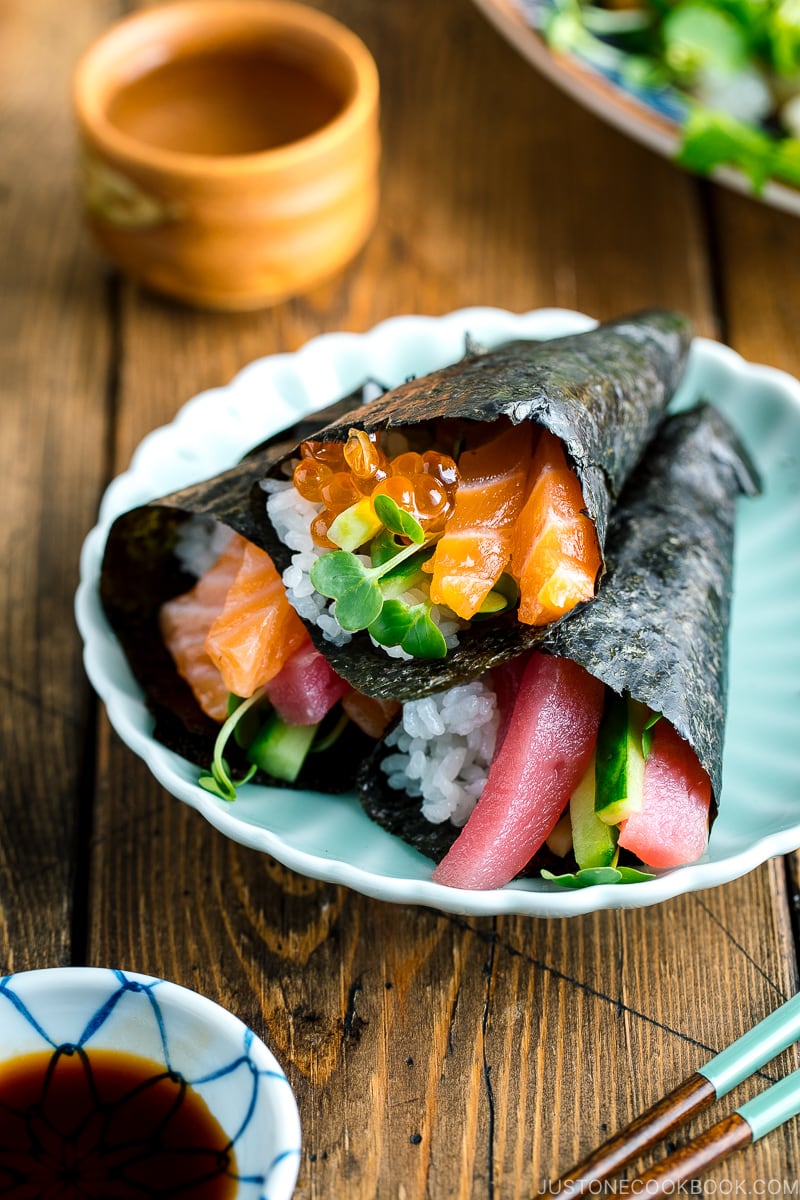
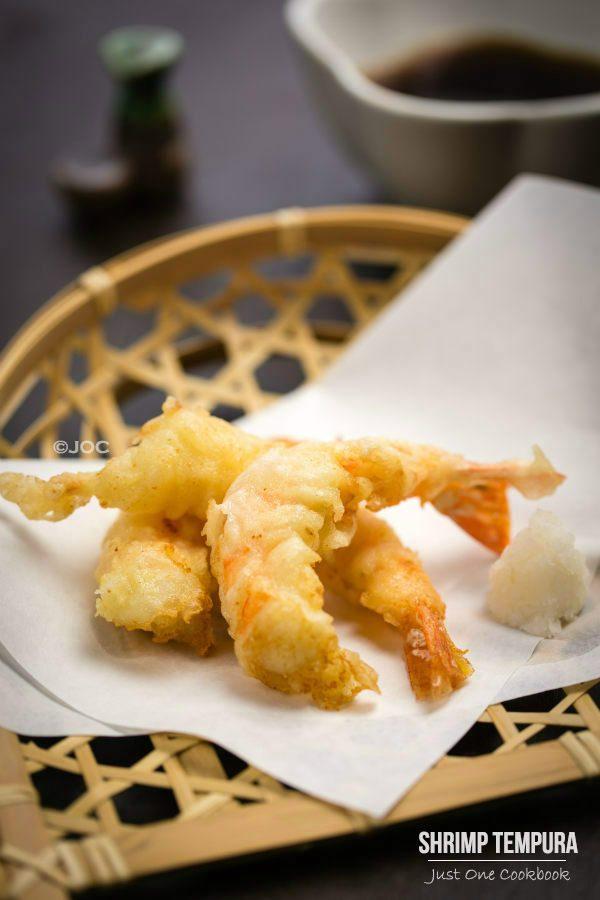
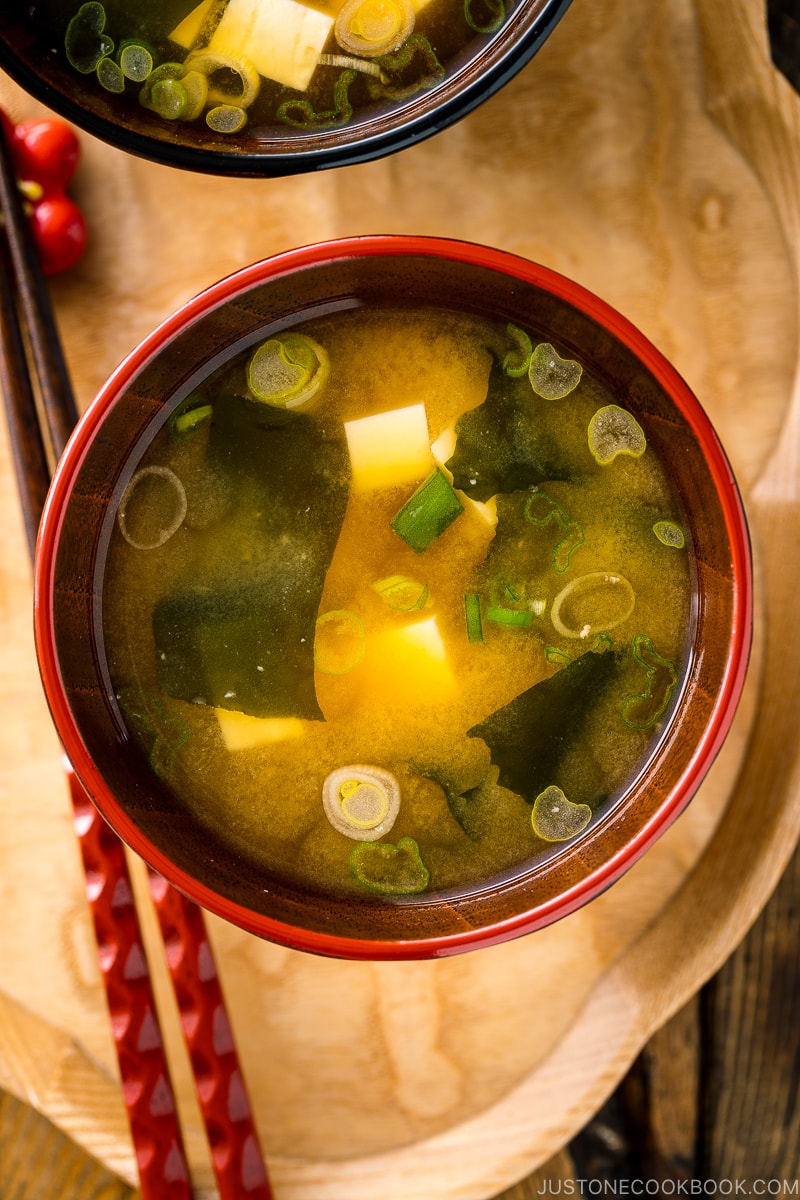
Storage Tips
To store: It‘s best to enjoy sushi rolls the same day you make them. Rice gets hard and dry in the refrigerator. If you really want to refrigerate them, I recommend covering them with plastic and a thick kitchen towel so the rice will stay cool and safe but not become cold.
Frequently Asked Questions
Can I make this recipe ahead of time?
I recommend making the sushi rice fresh and consuming the rolls the same day you make them, as this is when they have the best texture and flavor. You can make the crab filling and slice the cucumbers up to one day in advance, but the avocado, nori, and rice should be prepared shortly before you want to serve.
Are California rolls good for beginners to make?
Yes, California rolls are excellent sushi rolls for beginners because there is no raw fish involved, and the filling comes together quickly and easily. The rolling technique does take some time to get used to, but with some practice, you can become a professional in no time!
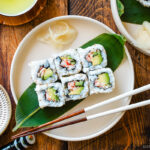
Prep Time: 1 hour
Rice Cook Time: 1 hour
Total Time: 2 hours
Servings: 8 rolls (cut into 8 pieces per roll)
Japanese Ingredient Substitution: If you want substitutes for Japanese condiments and ingredients, click here.
Before You Start: You'll need ¾ cup (110 g) of prepared sushi rice for each California roll or a total of 6 cups (880 g) of seasoned rice for 8 rolls. Cook 2¼ cups (3 rice cooker cups) of uncooked short-grain white rice to yield 6⅔ cups (990 g) of cooked rice.
Now, gather all the ingredients.

To Cook the Rice
Wash and rinse: Put 2¼ cups uncooked Japanese short-grain white rice in a large bowl. Add enough cold tap water to wet the rice, then drain. Use your fingers to gently agitate and “wash“ the wet grains in a circular motion for 10–15 seconds. Rinse with more water, then immediately pour off the cloudy water. Repeat washing and rinsing two more times until the water is almost clear. Drain it well in a fine-mesh sieve and shake off any excess water.
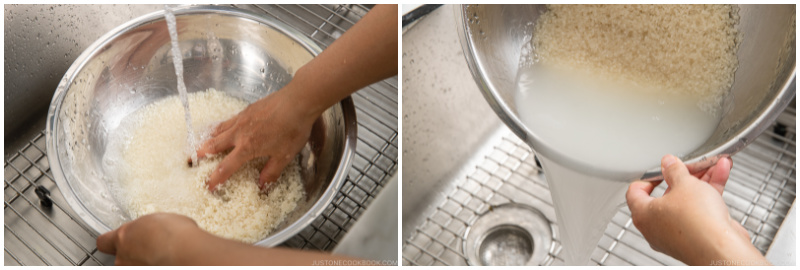
Soak and cook: Transfer the well-drained rice to the inner pot of a rice cooker. Add 2¼ cups water to the pot. Level the rice, then place 1 piece kombu (dried kelp) on top. Soak the rice in the water for 20–30 minutes. Then, start cooking. Tip: If you don‘t have a rice cooker, cook the rice in a pot on the stove, Instant Pot, or donabe with the measured water I specify in this recipe.
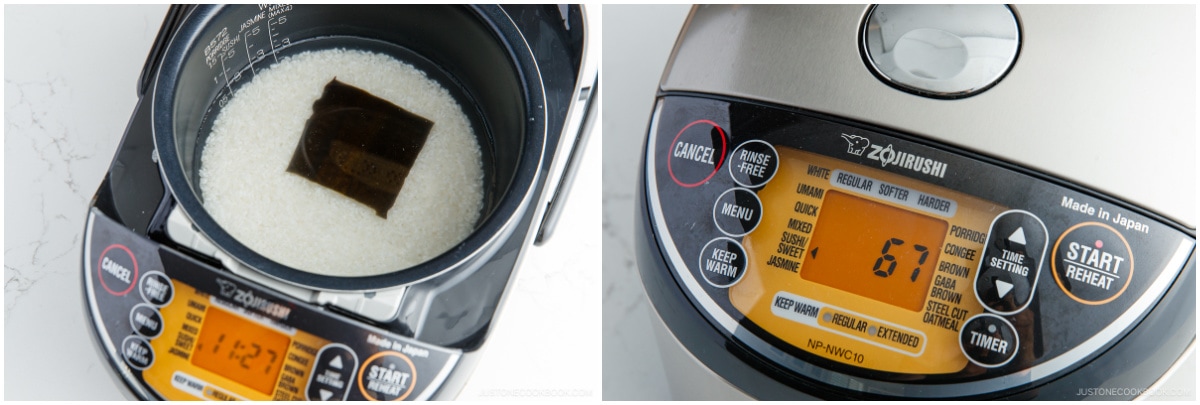
To Season the Sushi Rice
Make homemade sushi vinegar (optional): Combine ⅓ cup rice vinegar (unseasoned), 3 Tbsp sugar, and 1½ tsp Diamond Crystal kosher salt in a small saucepan. Bring it to a near simmer over medium-high heat and whisk to completely dissolve the sugar. You could also microwave the ingredients in a microwave-safe bowl for 1 minute to dissolve the sugar. Set aside to cool.
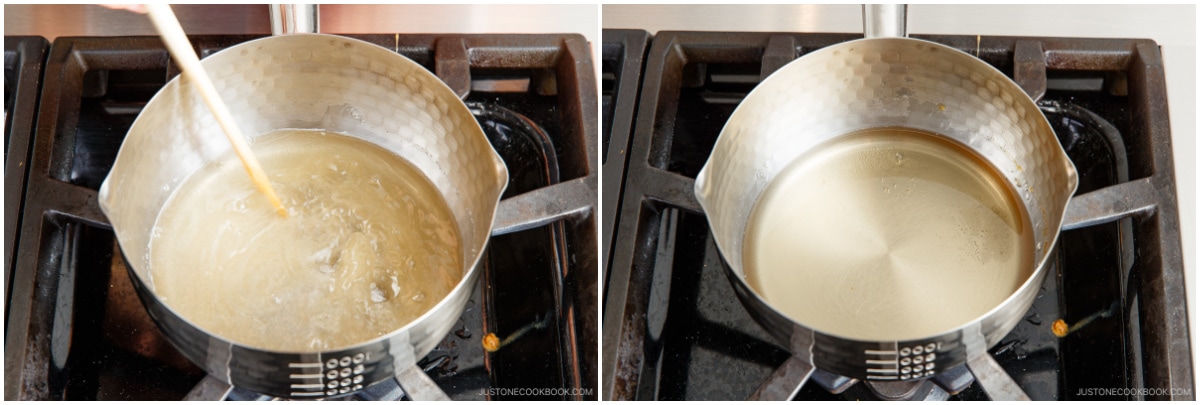
When the rice is cooked, discard the used kombu. Tip: You can repurpose it to make simmered kombu.
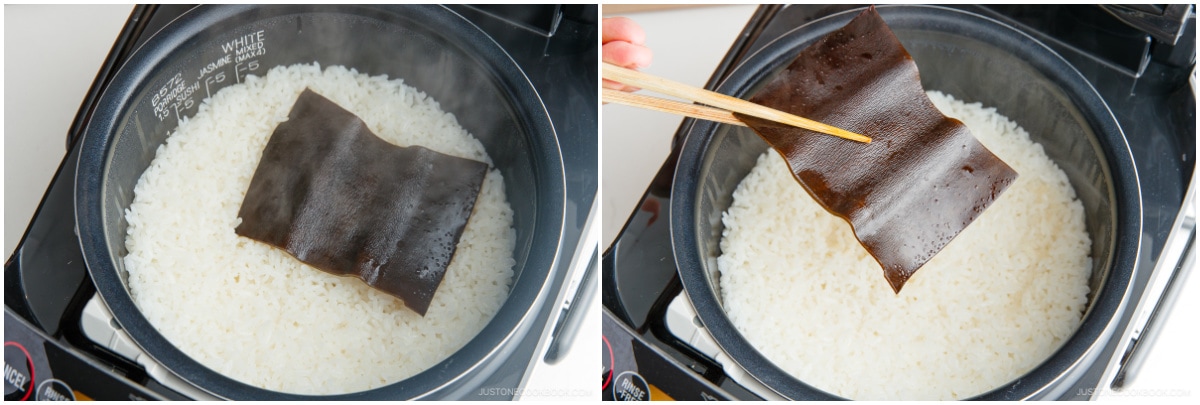
If using a sushi oke (hangiri), moisten it with running water, drain well, and dry with a clean towel. Transfer the hot cooked rice to the sushi oke; you could also use a large salad bowl or baking sheet lined with parchment paper. Then, spread out the rice evenly so it will cool faster. Tip: A wooden tub helps absorb excess moisture.
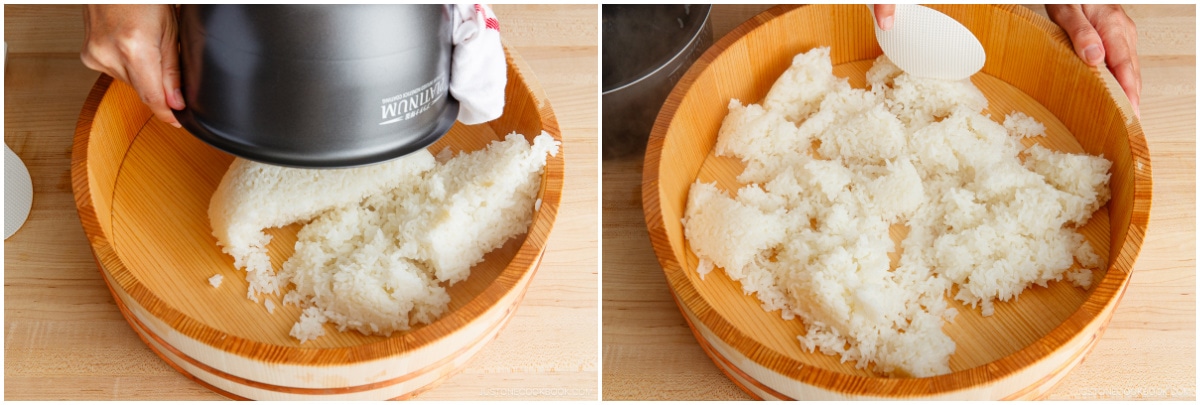
Immediately drizzle ⅓ cup seasoned rice vinegar (sushi vinegar) or the cooled homemade sushi vinegar over the hot rice.
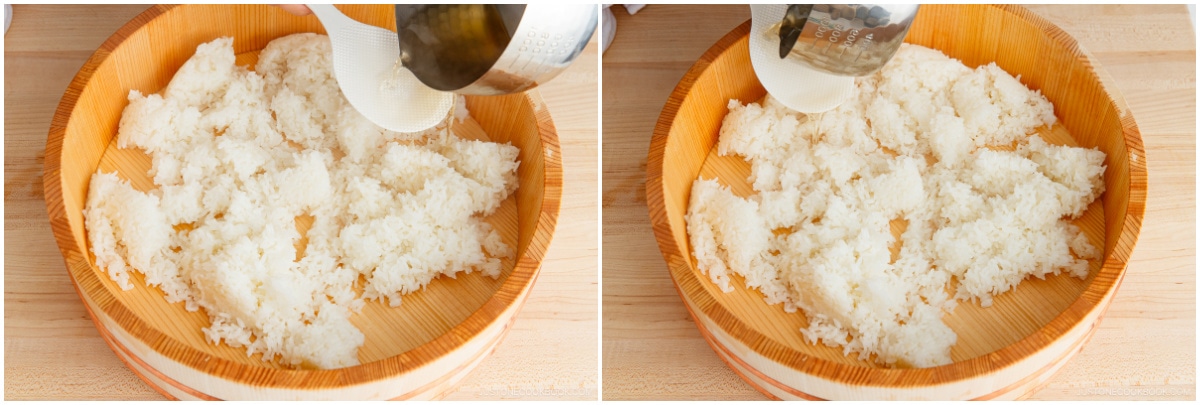
With a rice paddle, gently “slice” the hot rice at a 45-degree angle to incorporate the sushi vinegar and separate the rice chunks. Do not stir or mash the rice because that may break the grains and make it mushy. While slicing, vigorously fan the rice with a paddle fan or other fan; this wicks away the excess moisture and makes the rice shine. Gently flip the rice after every few slices.
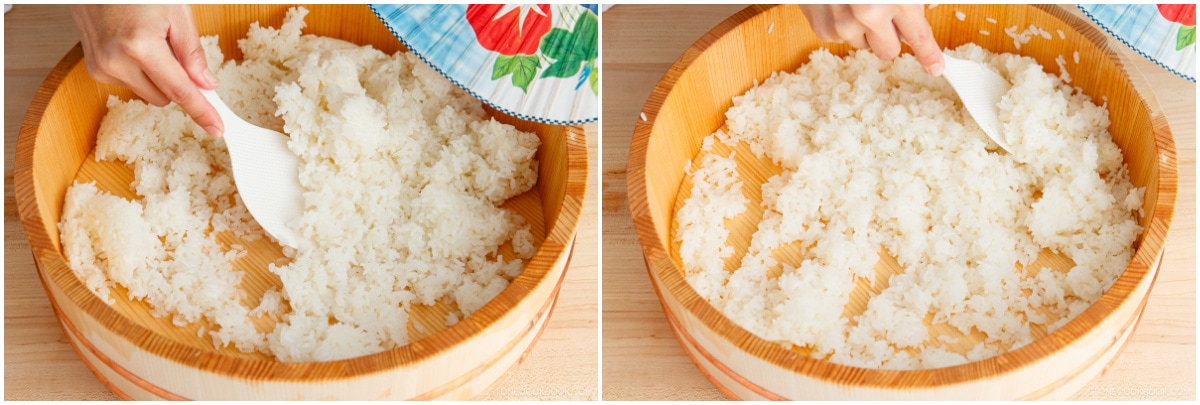
Repeat slicing and fanning until the rice is cooled to the temperature of human skin. Cover the prepared sushi rice with a damp cloth while you prepare the fillings. Keep it covered at all times to prevent drying.
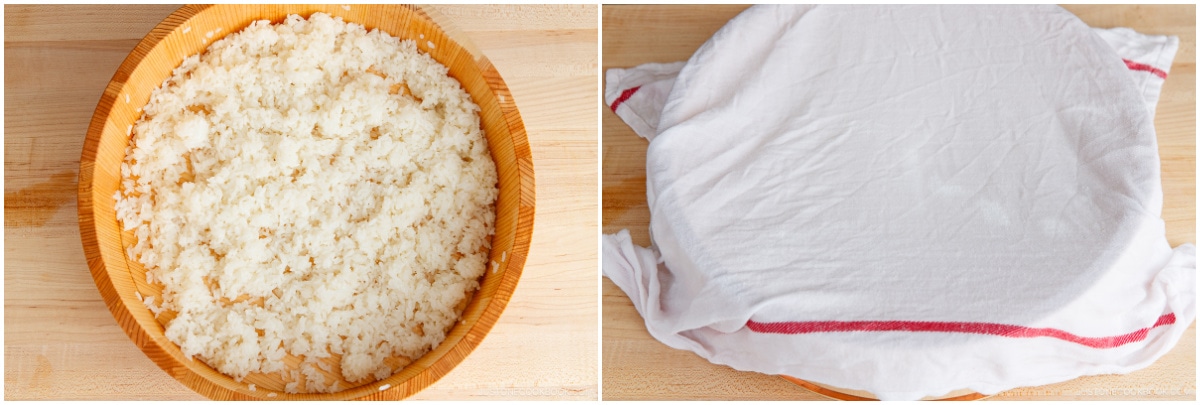
To Prepare the Fillings
Crabmeat: Cut 5 oz real or imitation crabmeat into smaller pieces, about 1 inch (2.5 cm) wide.
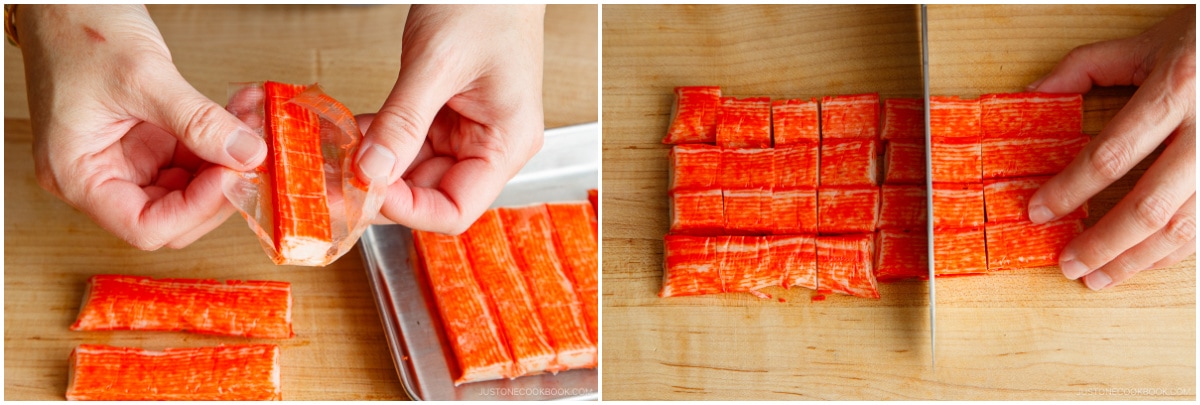
Separate and shred the crabmeat with your fingers and place in a bowl. Add 1 Tbsp Japanese Kewpie mayonnaise and mix it all together.
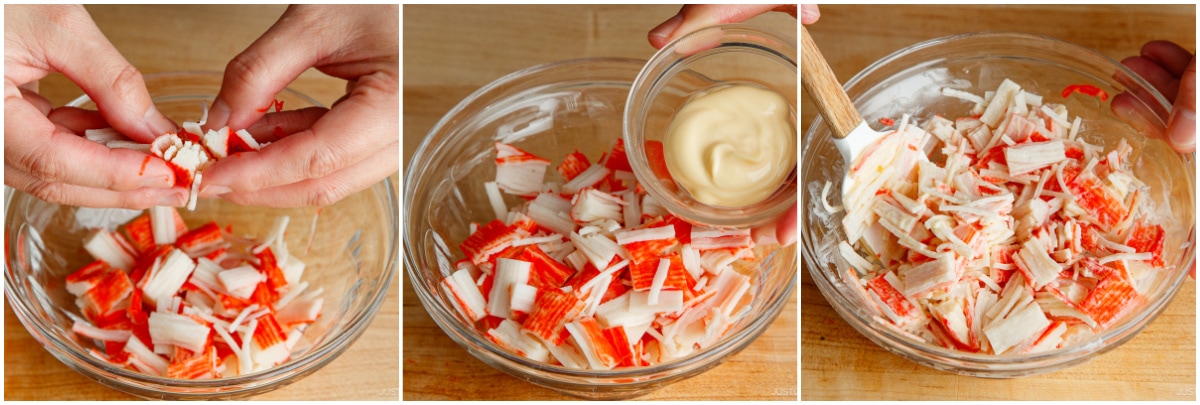
Cucumber: Cut 2 Japanese or Persian cucumbers into quarters lengthwise.
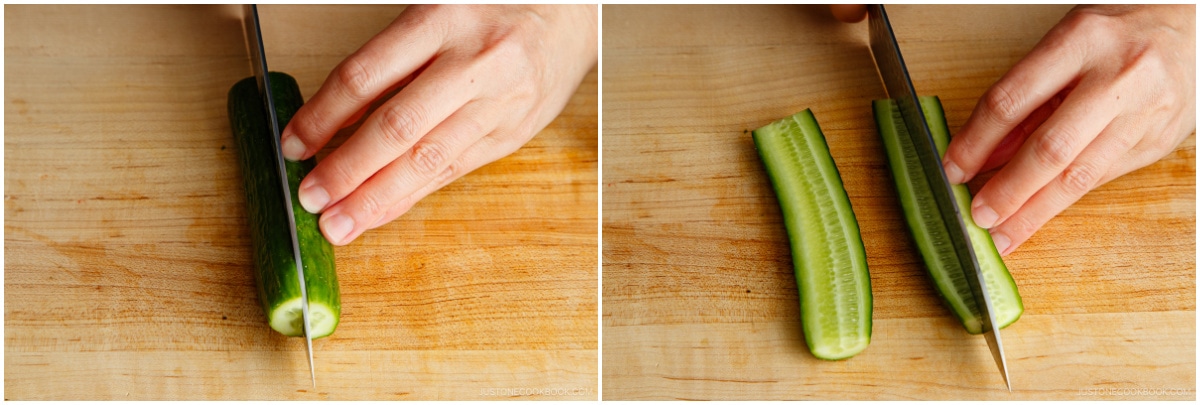
Remove and discard the seeds. Then, cut it lengthwise into thin, long strips.
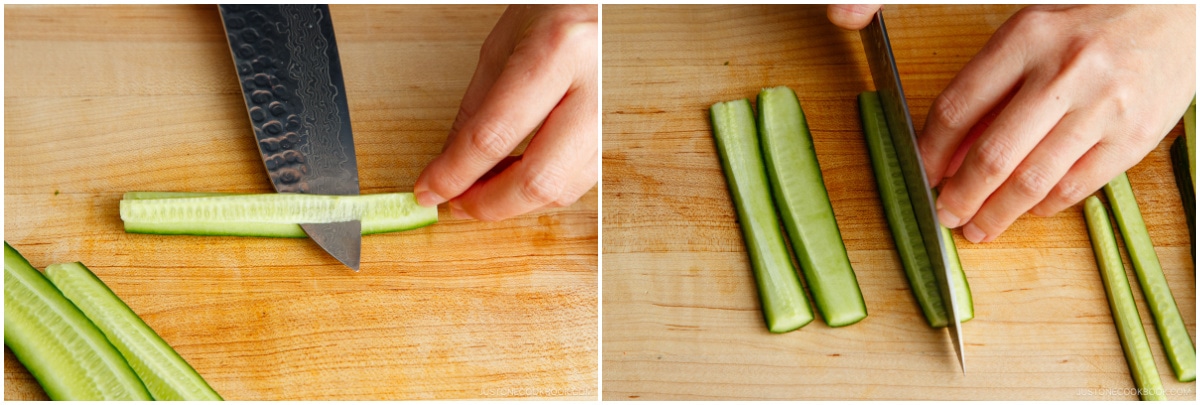
Avocado: Cut 1 avocado (large) in half lengthwise around the seed: Insert the knife through the skin and flesh until it meets the pit. Rotate the avocado so the knife slices all the way around the pit. Twist the two halves until they separate.
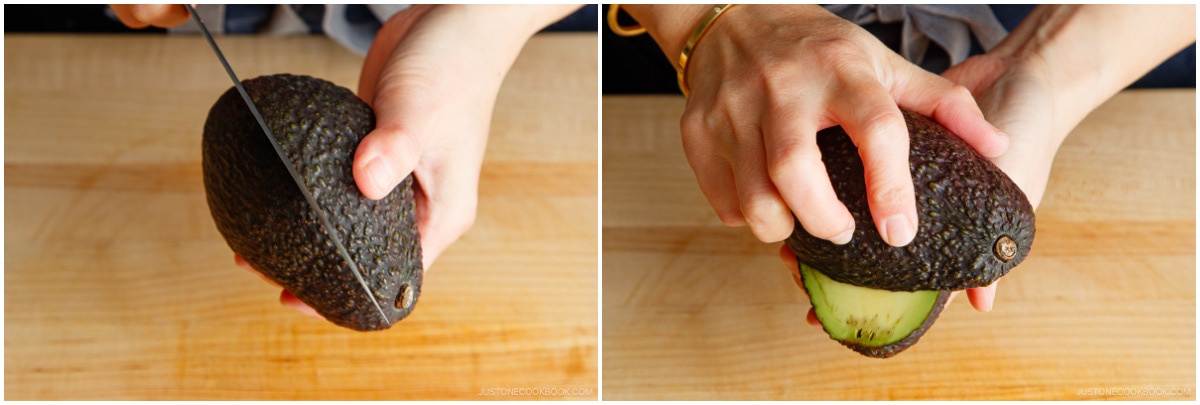
Set the half with the pit on the cutting board or hold it with a folded kitchen towel. Gently hit the pit with the heel of the knife to embed the edge. Twist the knife and pit in a counter direction to the avocado; the pit should come out smoothly. Next, slice the avocado in half lengthwise to make quarters (leave the skin on).
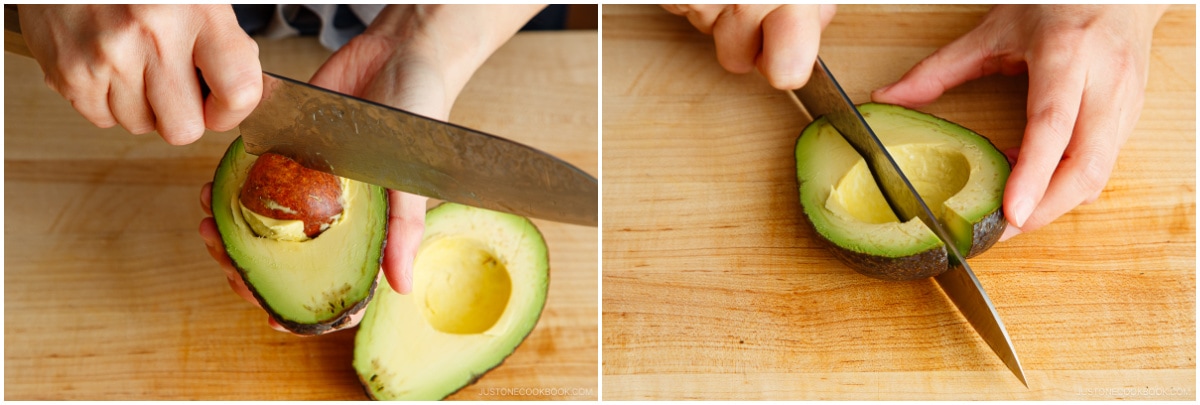
Carefully cut the quarters lengthwise into thin, ¼-inch (6-mm) slices, again leaving the skin on. Squeeze the juice of ½ lemon on the slices to prevent browning.
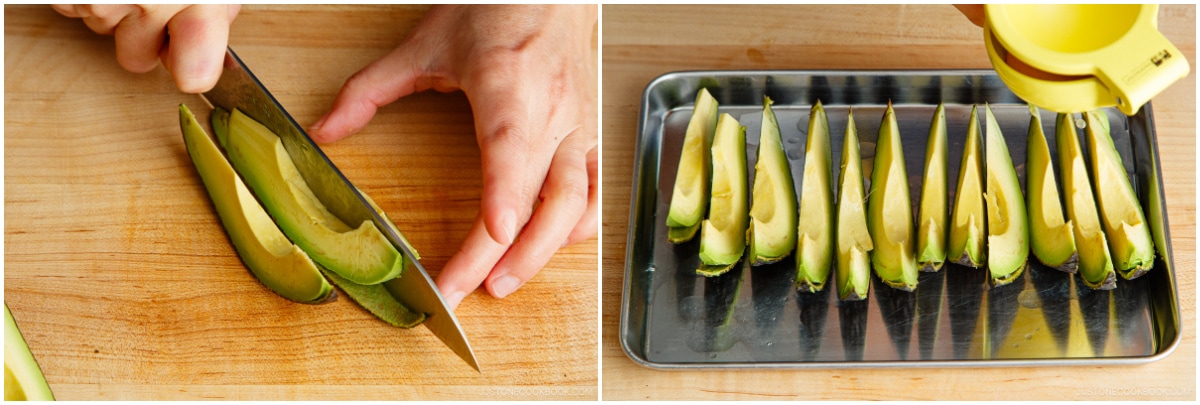
Nori: Cut 4 sheets nori (dried laver seaweed) in half crosswise to make 8 half sheets.
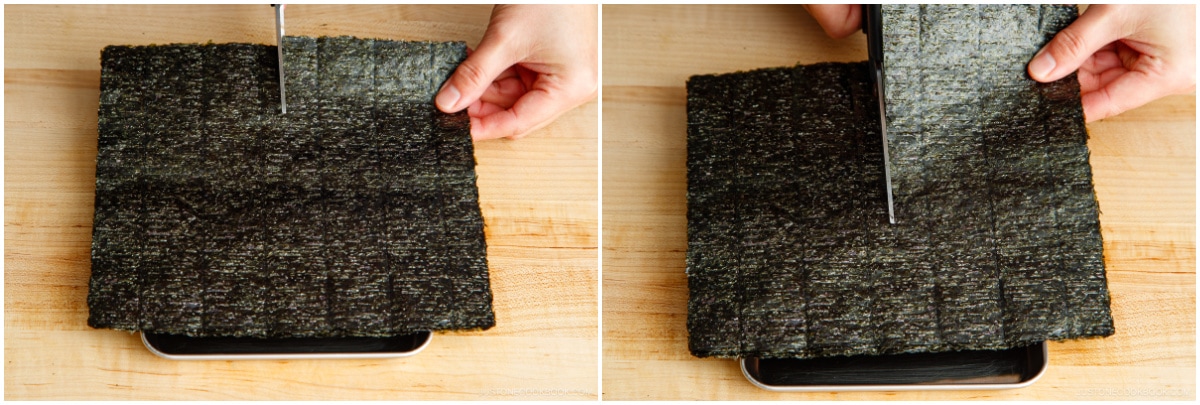
To Build the Rice Layer
Wrap the front and back of the bamboo sushi mat with plastic wrap.
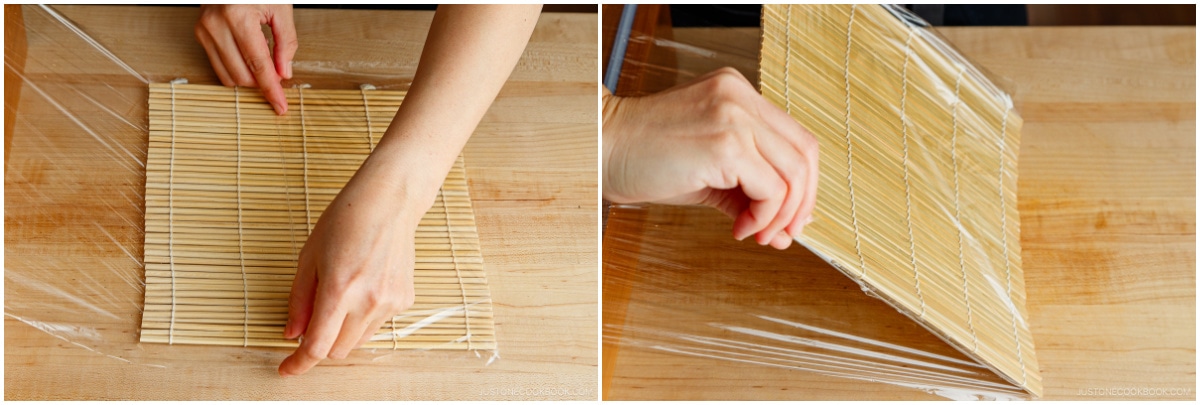
Keep the sides uncovered so no air gets trapped.
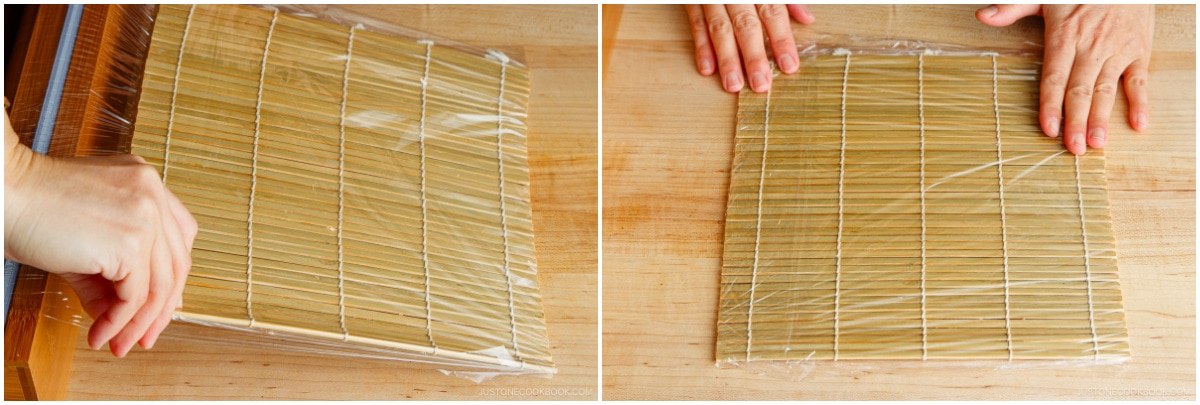
Dip a ¾-cup measuring cup into a bowl of water to wet it, shake off gently, and fill the cup with sushi rice.
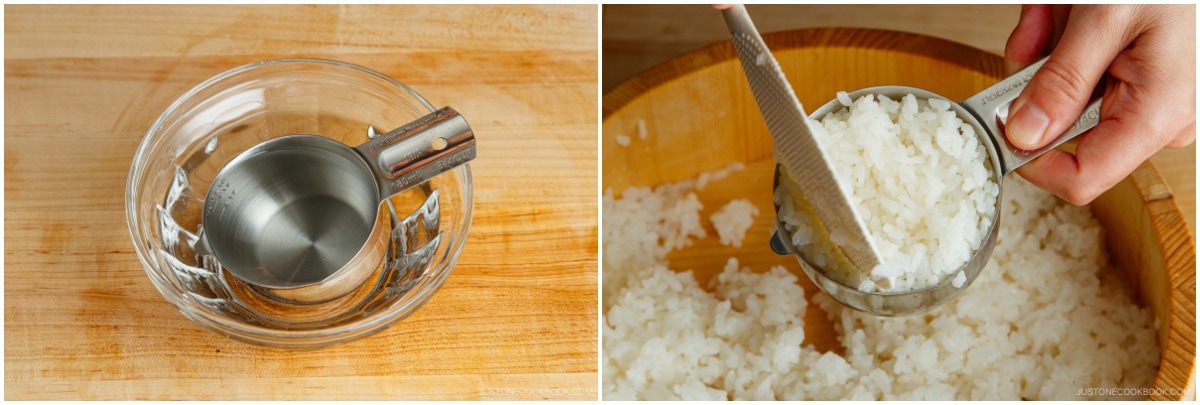
Lay a nori half sheet, shiny side down, on the bamboo sushi mat. Wet your fingers in the water bowl and evenly spread ¾ cup (110 g) sushi rice across the nori. Apply very gentle pressure so you don‘t mash the rice grains. Alternatively, you can use a plastic rice paddle to keep your hands clean.
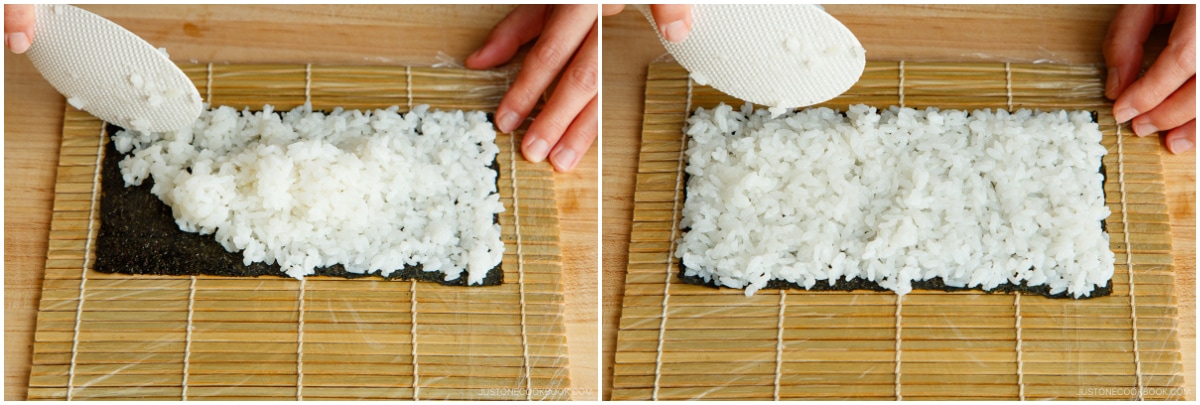
Sprinkle the rice with about ½ Tbsp toasted white sesame seeds.
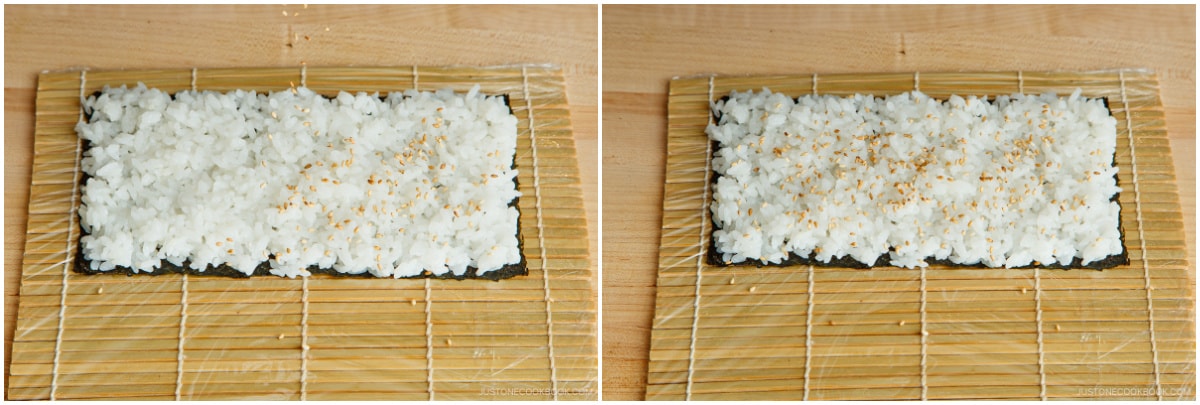
To Fill and Roll
Flip it over so the rice is now facing down on the mat. Place the nori about 1 inch (2.5 cm) away from the mat's bottom edge. Starting ½ inch (1.3 cm) up from the bottom of the nori, line up one portion of crabmeat, avocado with skins removed, and cucumber across the nori. Tip: Don‘t add too much filling, or it‘ll be extremely difficult to seal the roll.
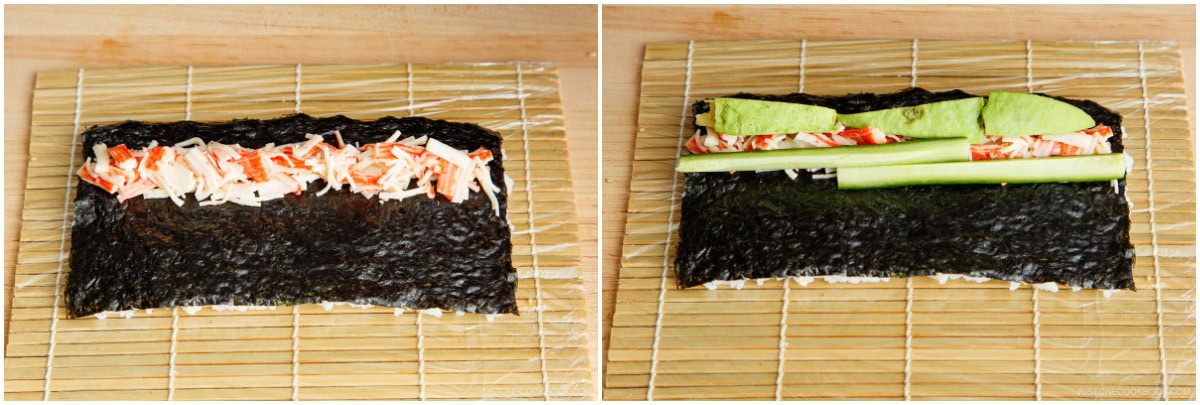
Grab the bottom edge of the mat with your index fingers and thumbs and hold the filling in place with your other fingers.
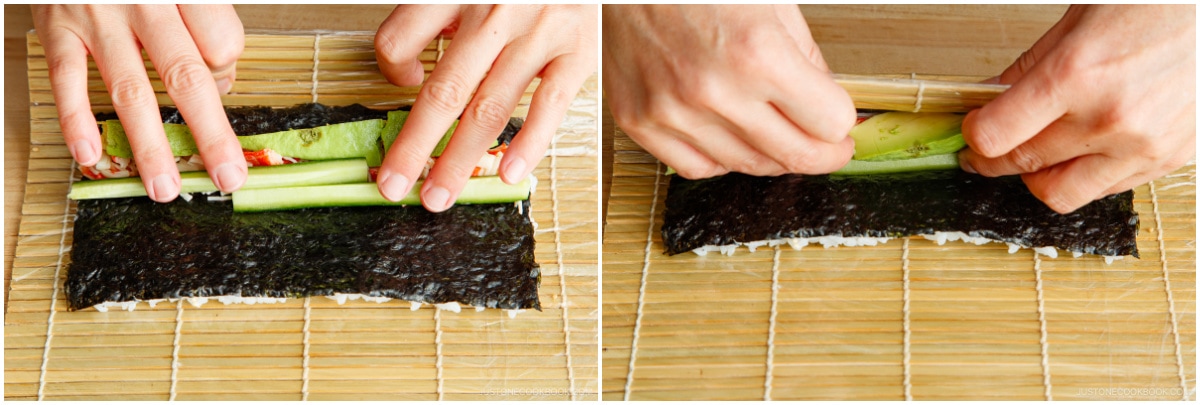
Roll the mat over the filling until the rice at the bottom edge meets the nori near the top edge. Then, flip back the mat‘s bottom edge toward you.
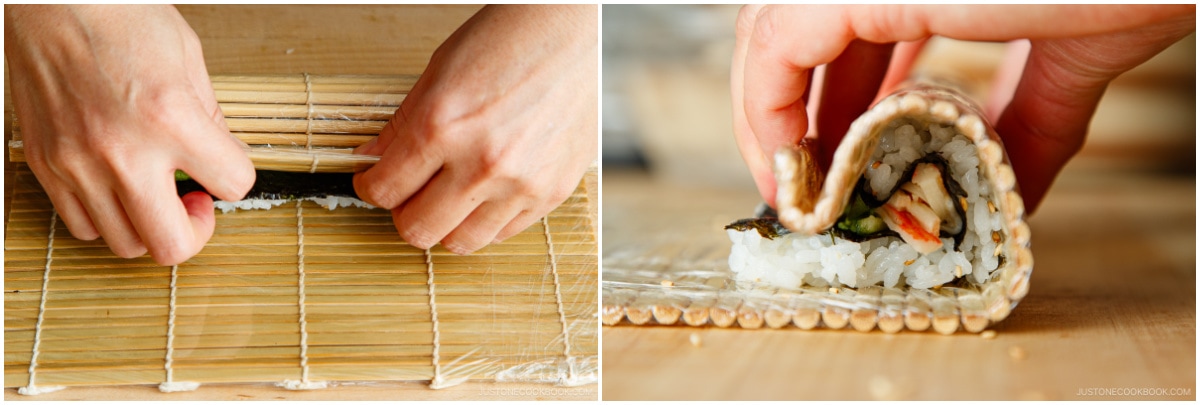
Firmly squeeze the roll through the mat with one hand while you use your other hand to pull the top of the mat away from you. Tip: This tension helps form a tight cylinder.
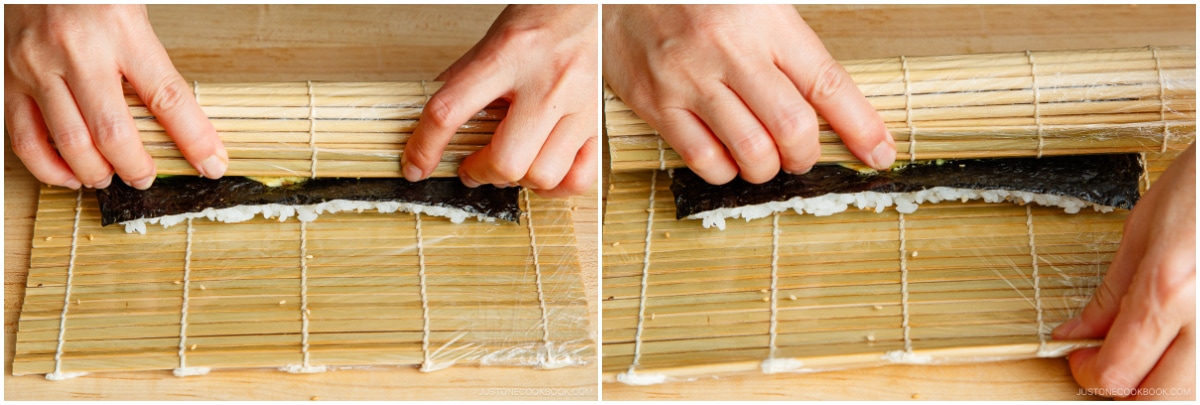
Next, use one hand to lift and slightly pull the mat's bottom edge as you use your other hand to roll the sushi and mat forward. Keep gentle pressure on the mat as you roll.

To shape, press the top of the roll with your index fingers while squeezing the sides with your thumbs and other fingers. Your sushi roll is now done.
Transfer it to a tray or plate and cover with a damp cloth at all times to prevent drying. Continue making the remaining rolls.
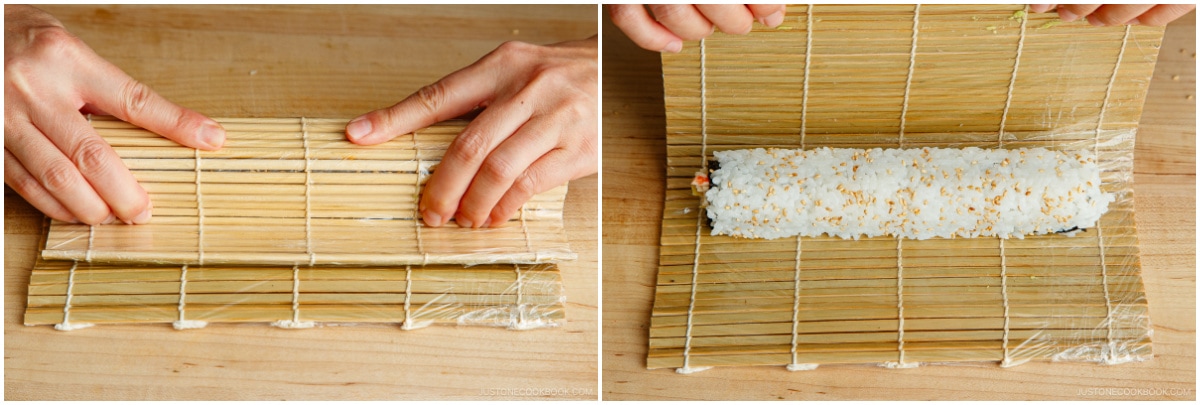
To Serve
With a very sharp knife, cut each roll in half crosswise. Then, cut each half into 4 pieces. Clean the knife with a damp cloth after every few cuts.
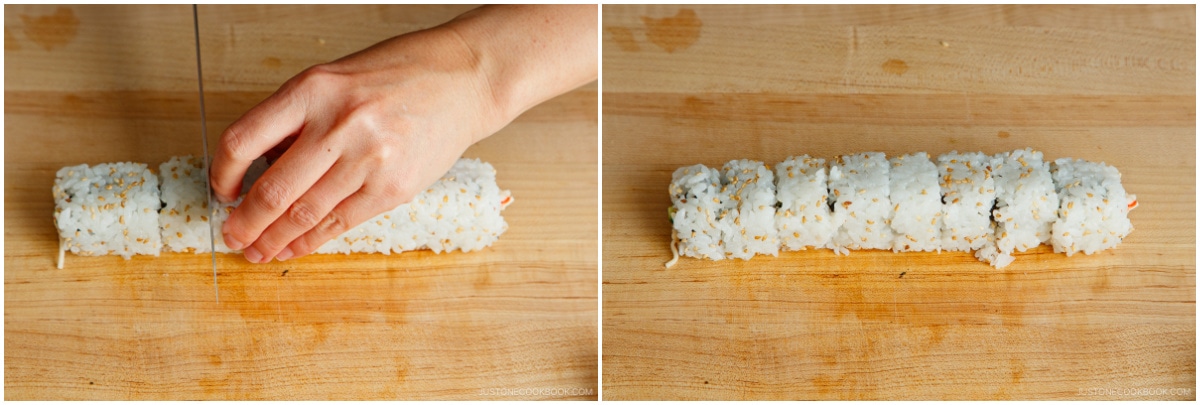
Place the bamboo sushi mat over the cut roll and re-shape it one last time. Remove the mat and add the optional toppings of your choice, like ikura (salmon roe) or yuzu-flavored tobiko (flying fish roe).
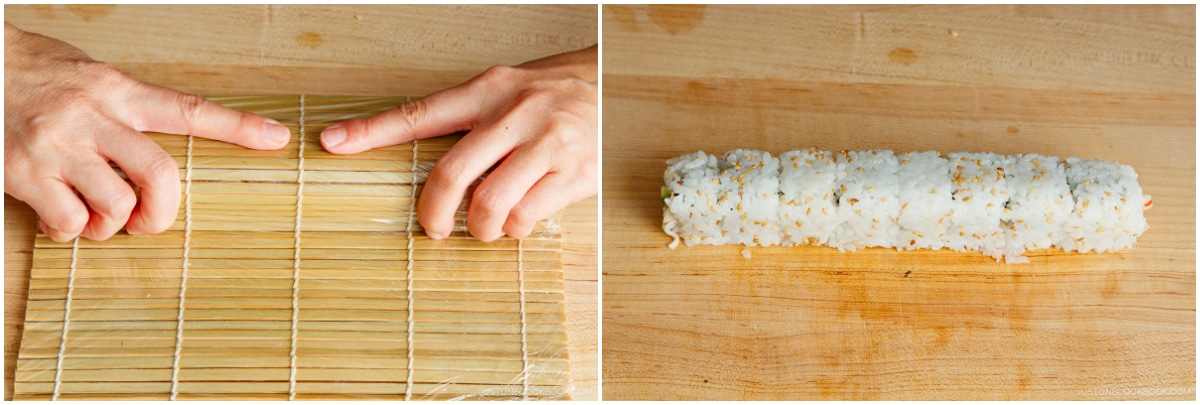
Serve with a small dish of soy sauce and wasabi for dipping and pickled sushi ginger (optional) on the side. Enjoy!

To Store
It‘s best to enjoy sushi rolls the same day you make them. Rice gets hard and dry in the fridge. If you really want to refrigerate them, my recommendation is to cover them with plastic and a thick kitchen towel, so the rice will stay cool and safe but not become cold.
Calories: 567 kcal · Carbohydrates: 110 g · Protein: 11 g · Fat: 8 g · Saturated Fat: 1 g · Polyunsaturated Fat: 2 g · Monounsaturated Fat: 4 g · Trans Fat: 0.004 g · Cholesterol: 3 mg · Sodium: 333 mg · Potassium: 313 mg · Fiber: 4 g · Sugar: 6 g · Vitamin A: 121 IU · Vitamin C: 4 mg · Calcium: 81 mg · Iron: 2 mg
Author: Namiko Hirasawa Chen
Course: Main Course
Cuisine: Japanese
Keyword: avocado roll, sushi
©JustOneCookbook.com Content and photographs are copyright protected. Sharing of this recipe is both encouraged and appreciated. Copying and/or pasting full recipes to any website or social media is strictly prohibited. Please view my photo use policy here.
If you made this recipe, snap a pic and hashtag it #justonecookbook! We love to see your creations on Instagram @justonecookbook!
Editor’s Note: This post was originally published on Aug 19, 2011. The content has been updated in May 2017. The post was updated with a revised recipe and new images on April 1, 2024, and republished with more helpful content on March 19, 2025.



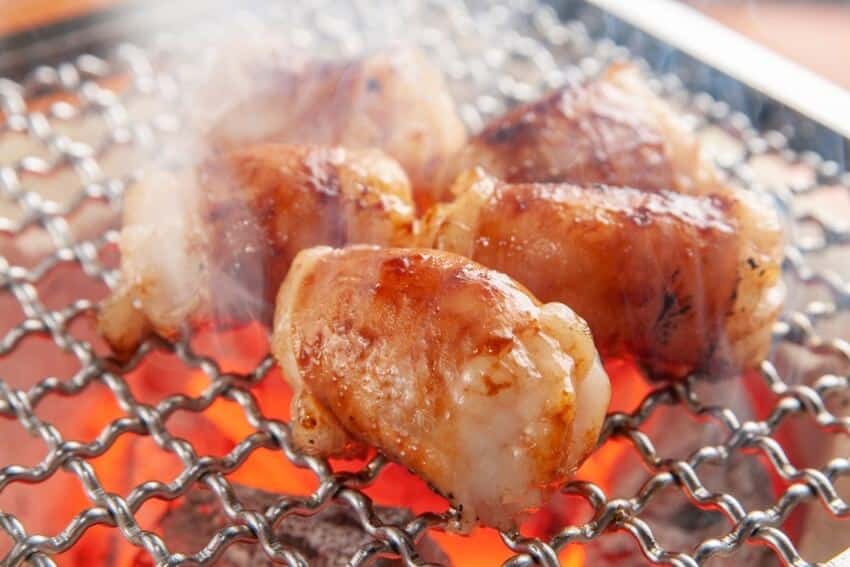

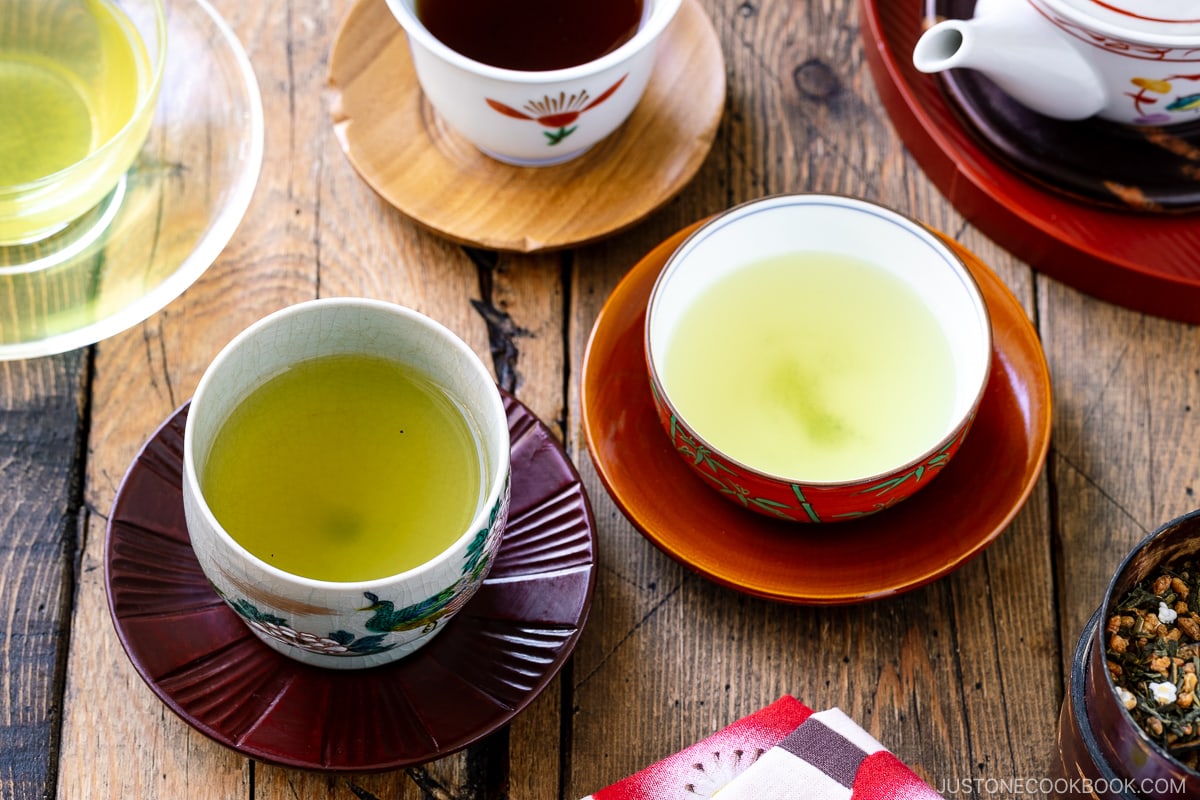





 English (US) ·
English (US) ·